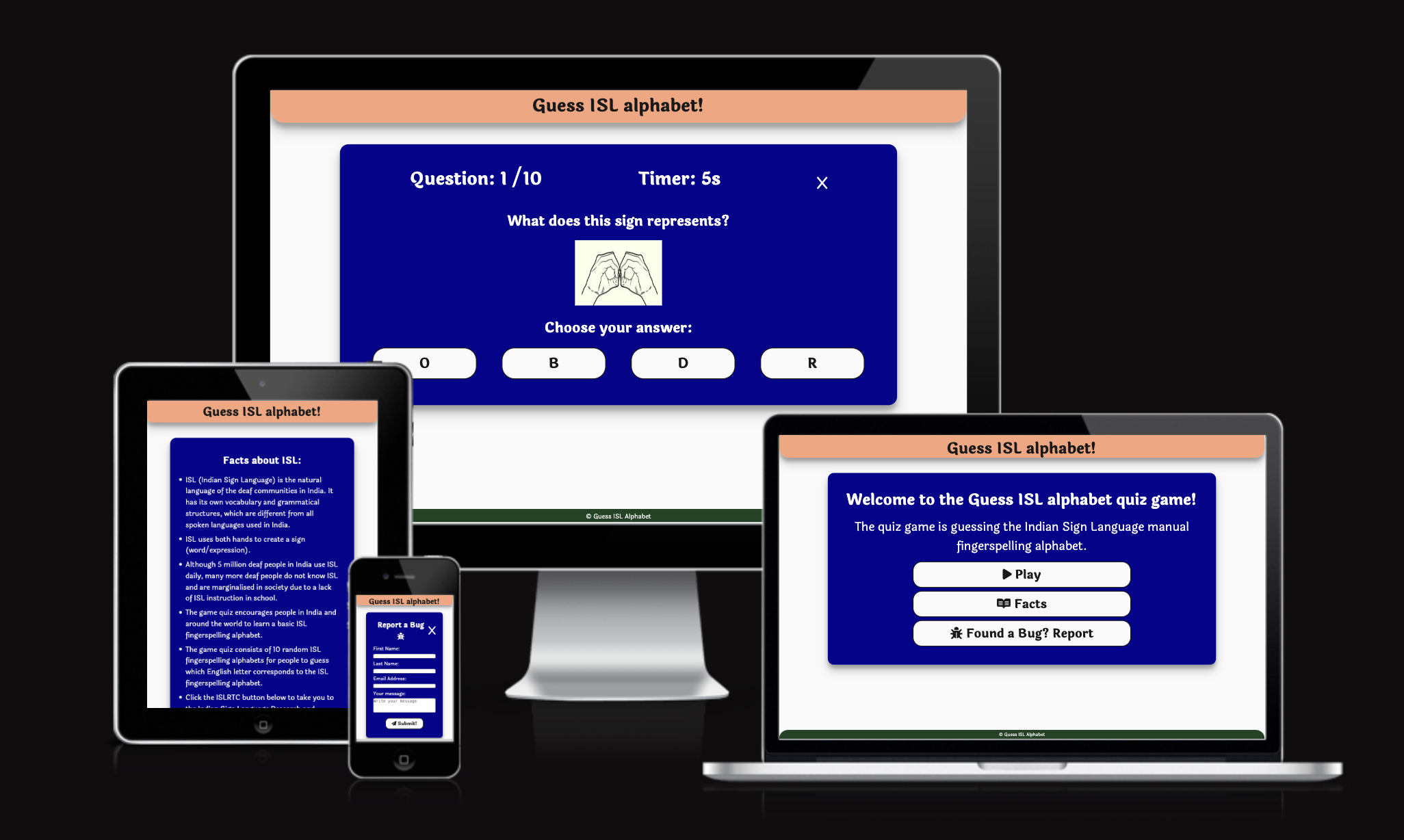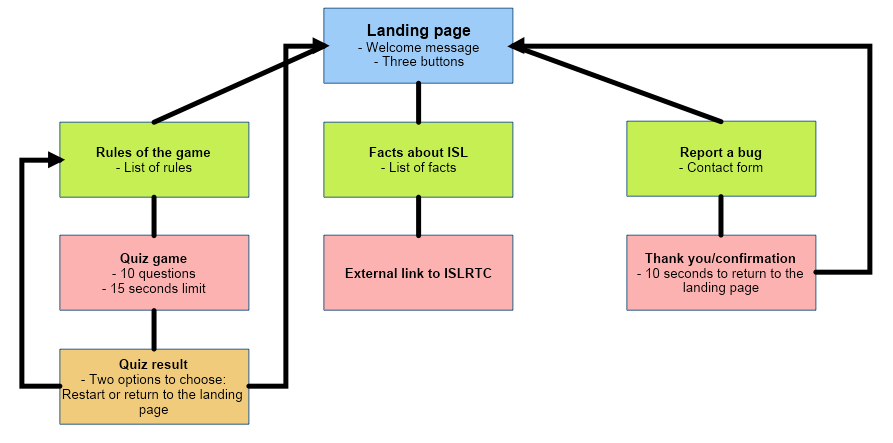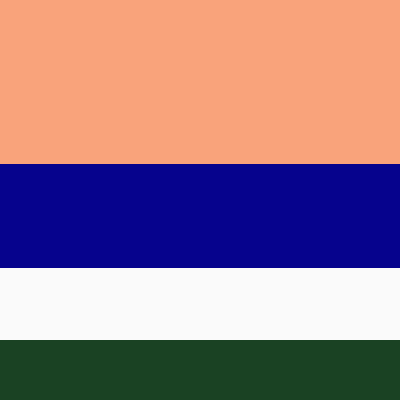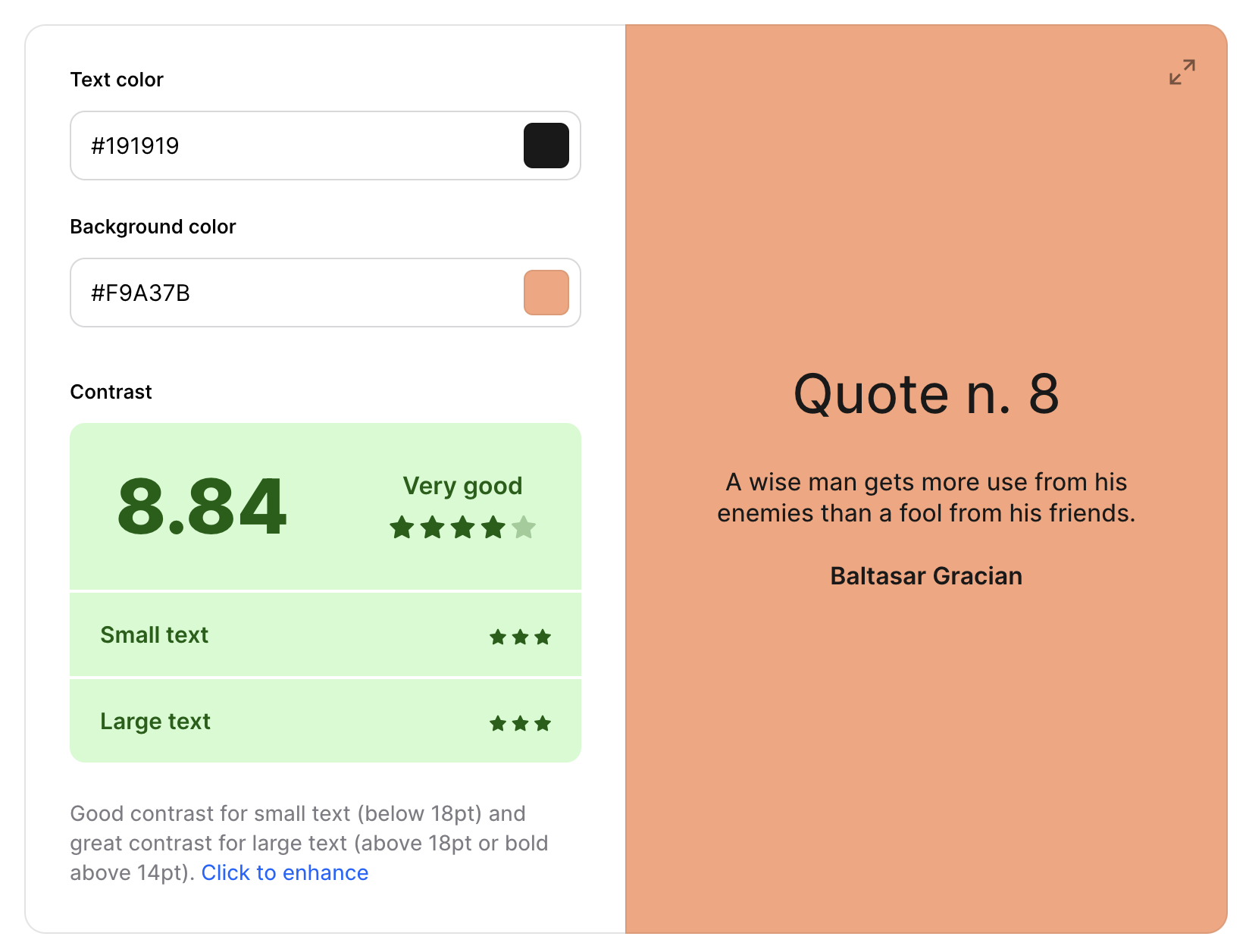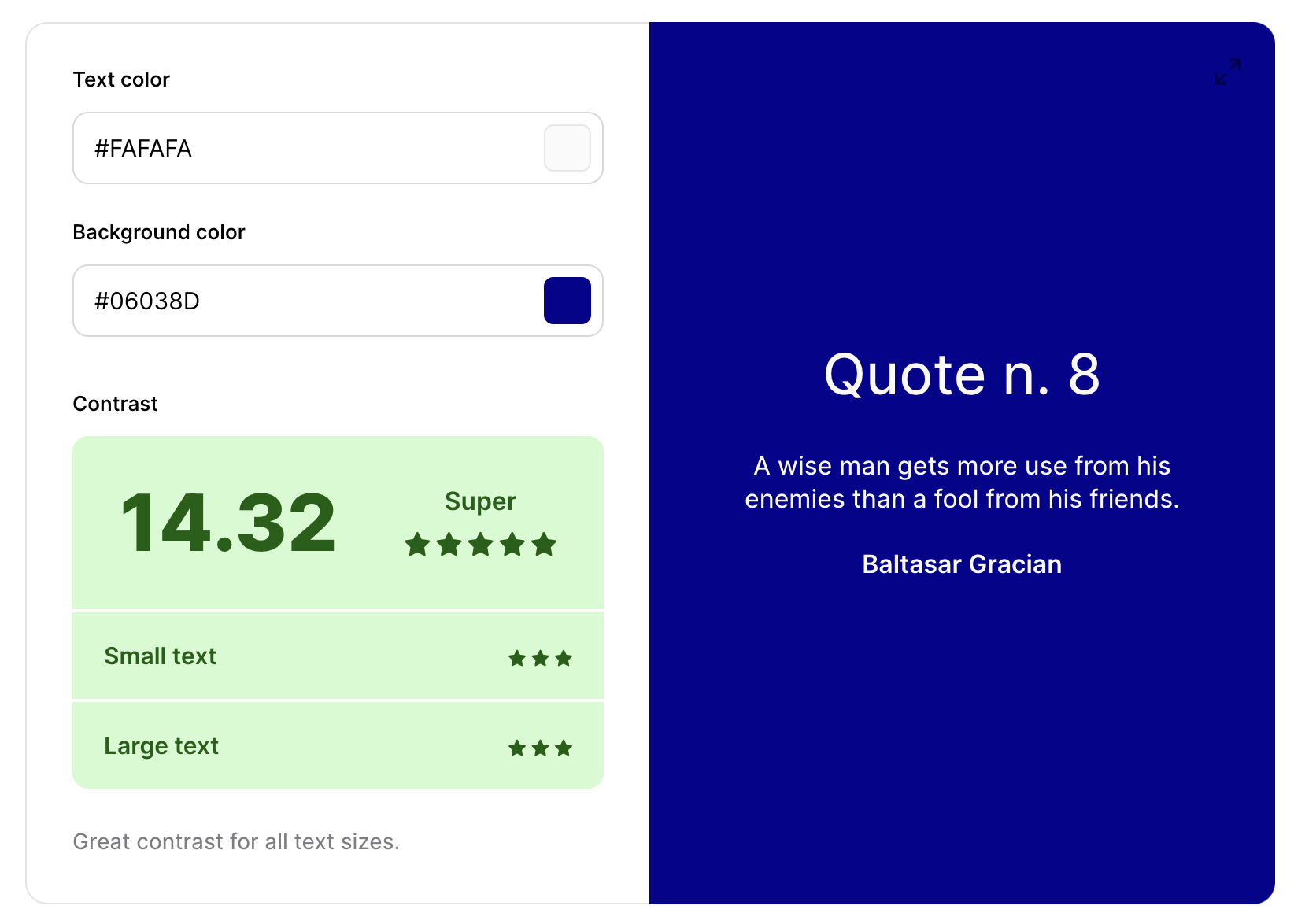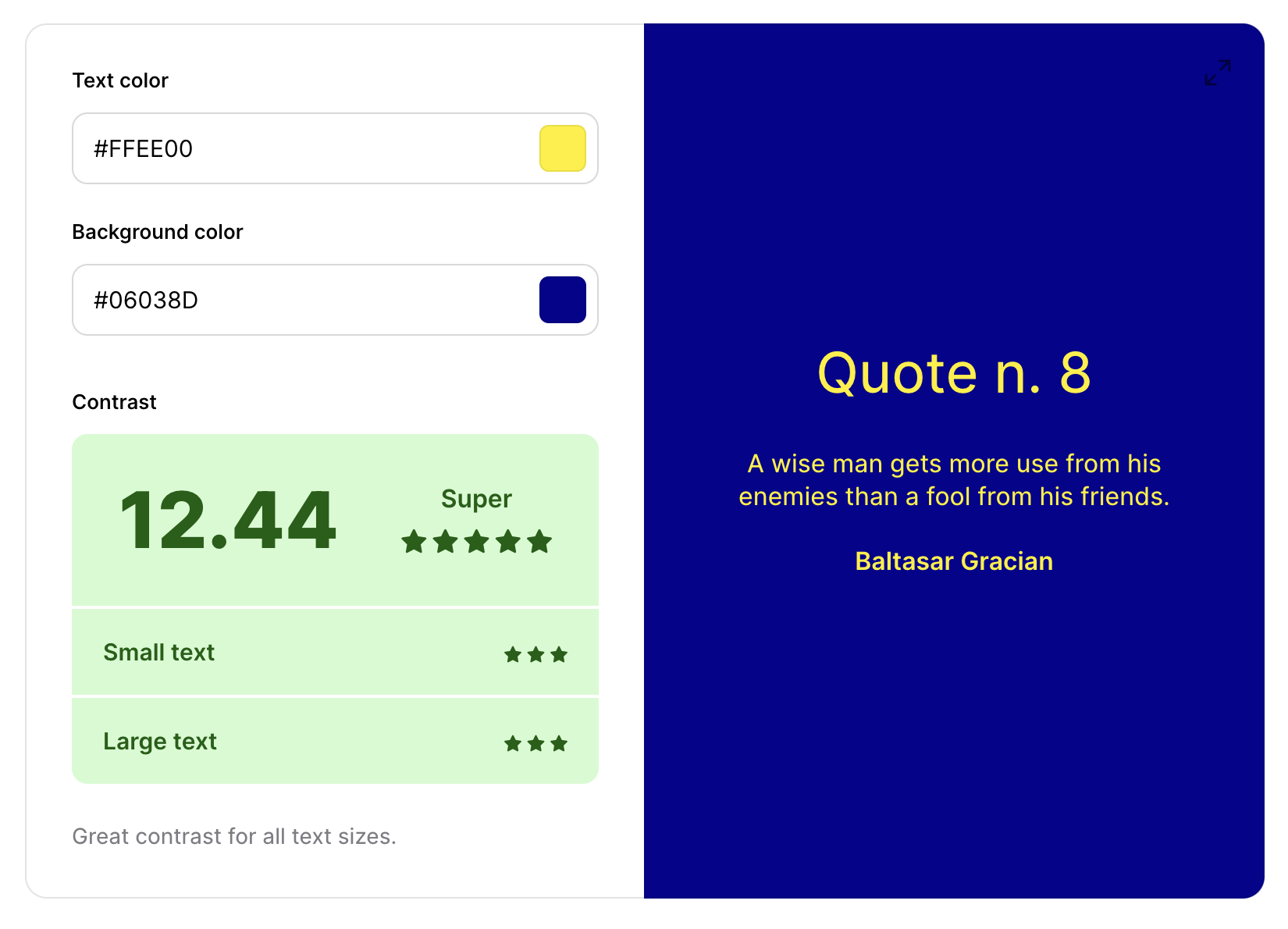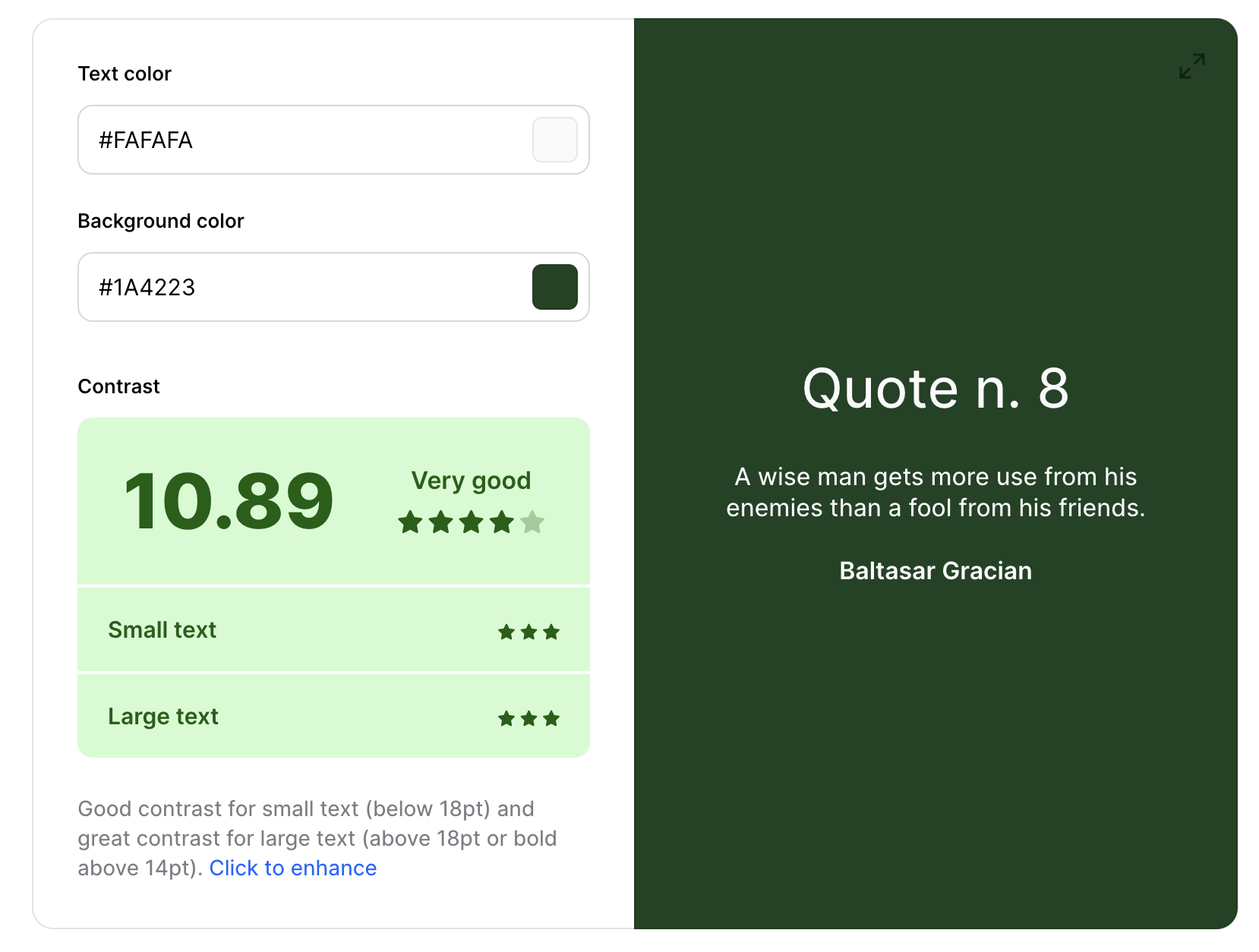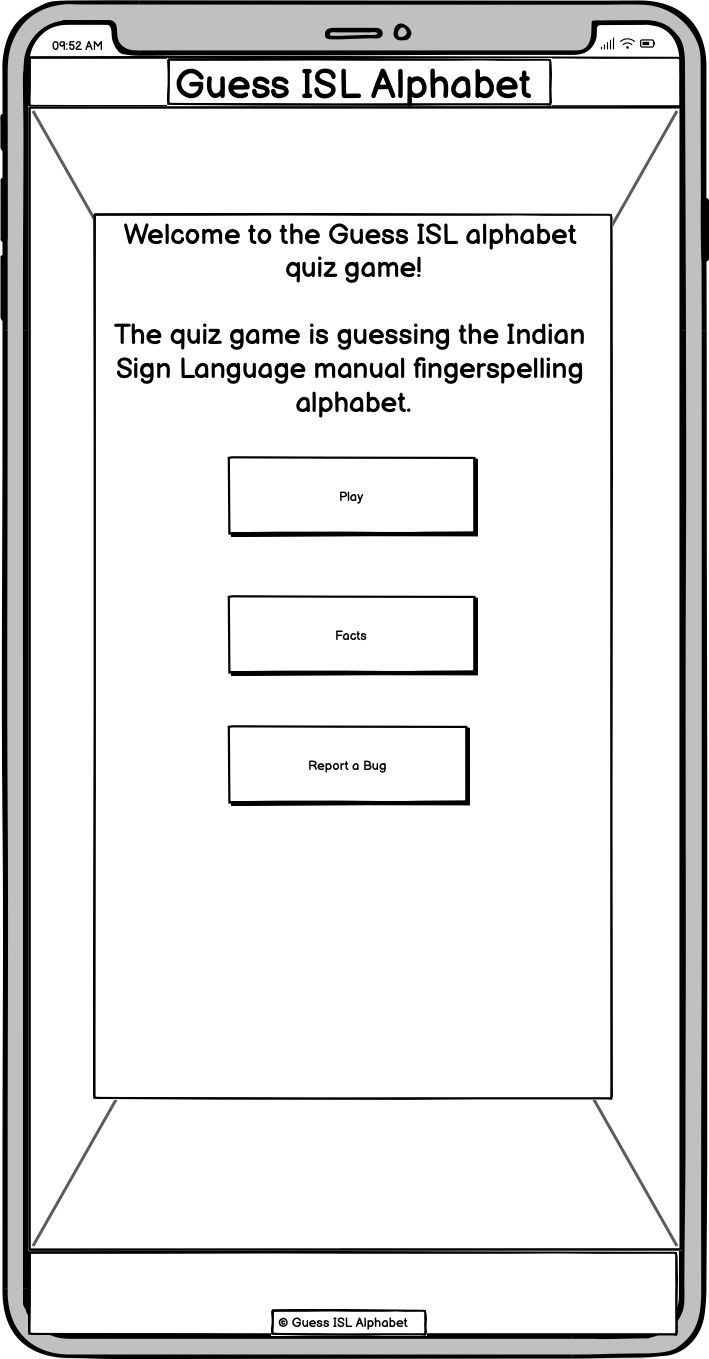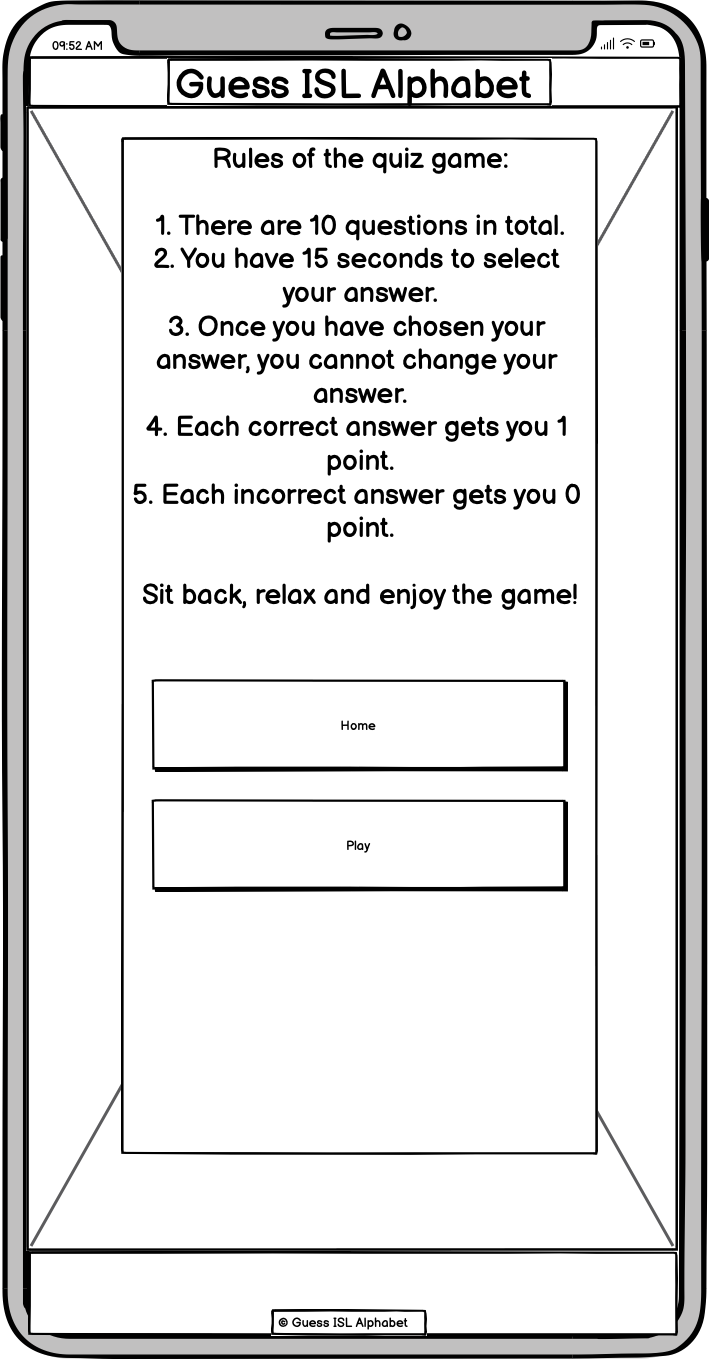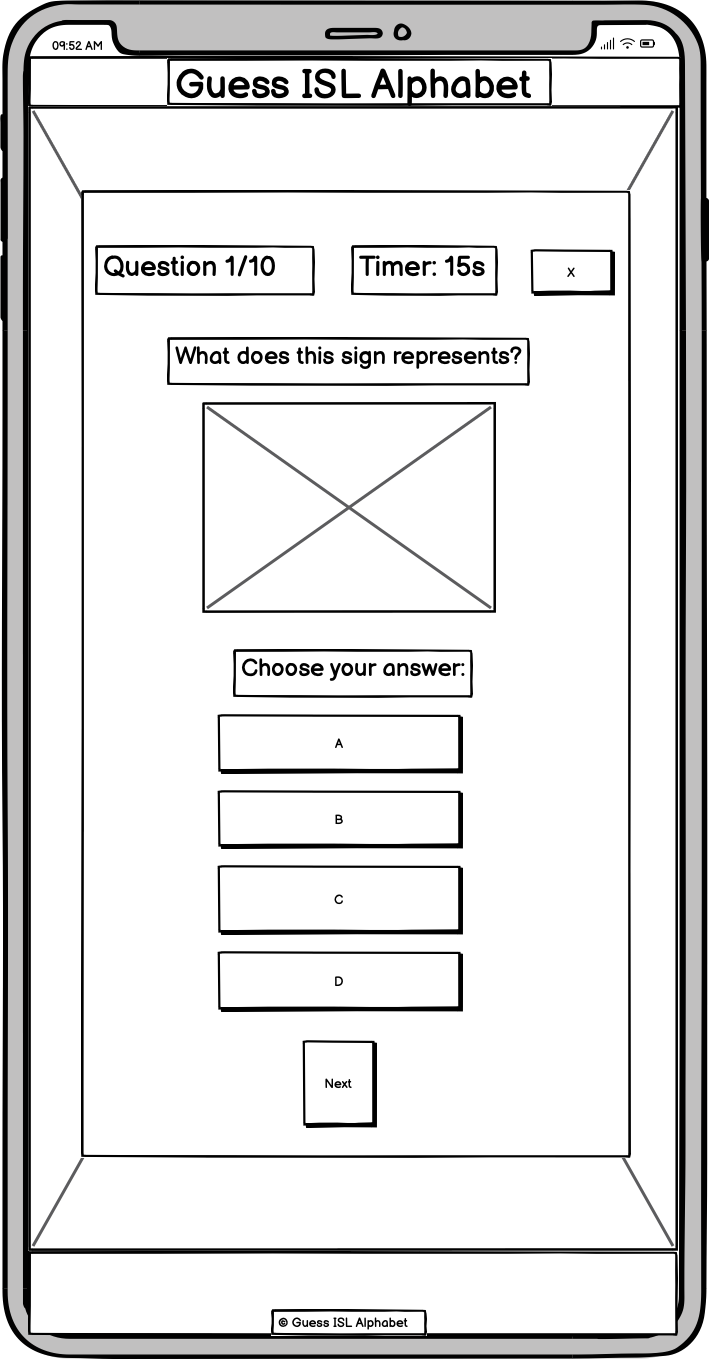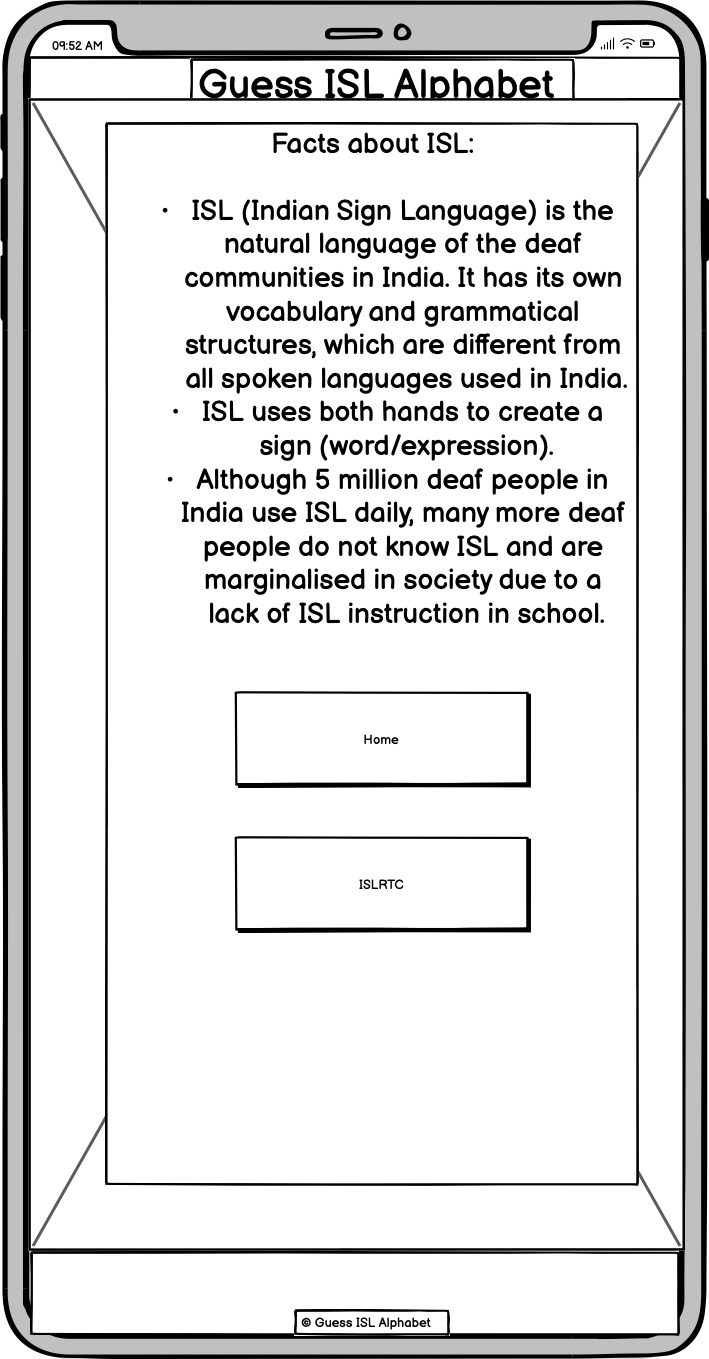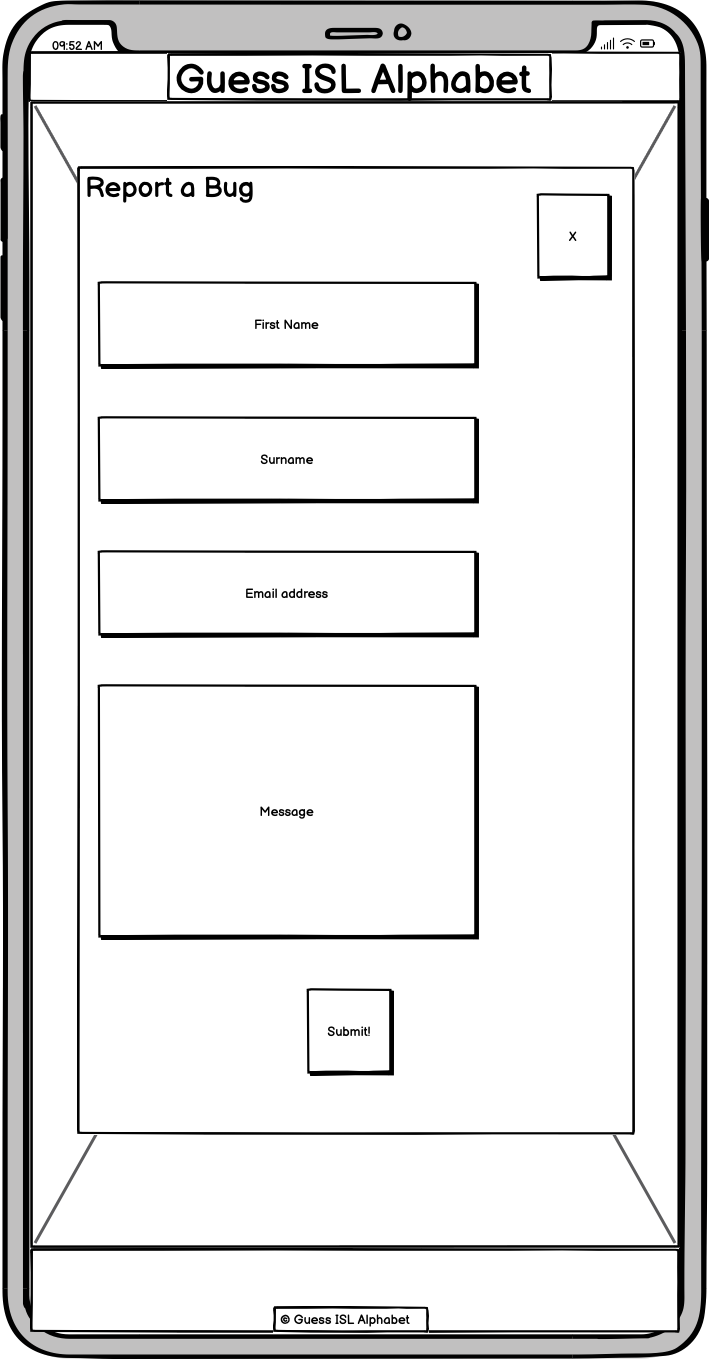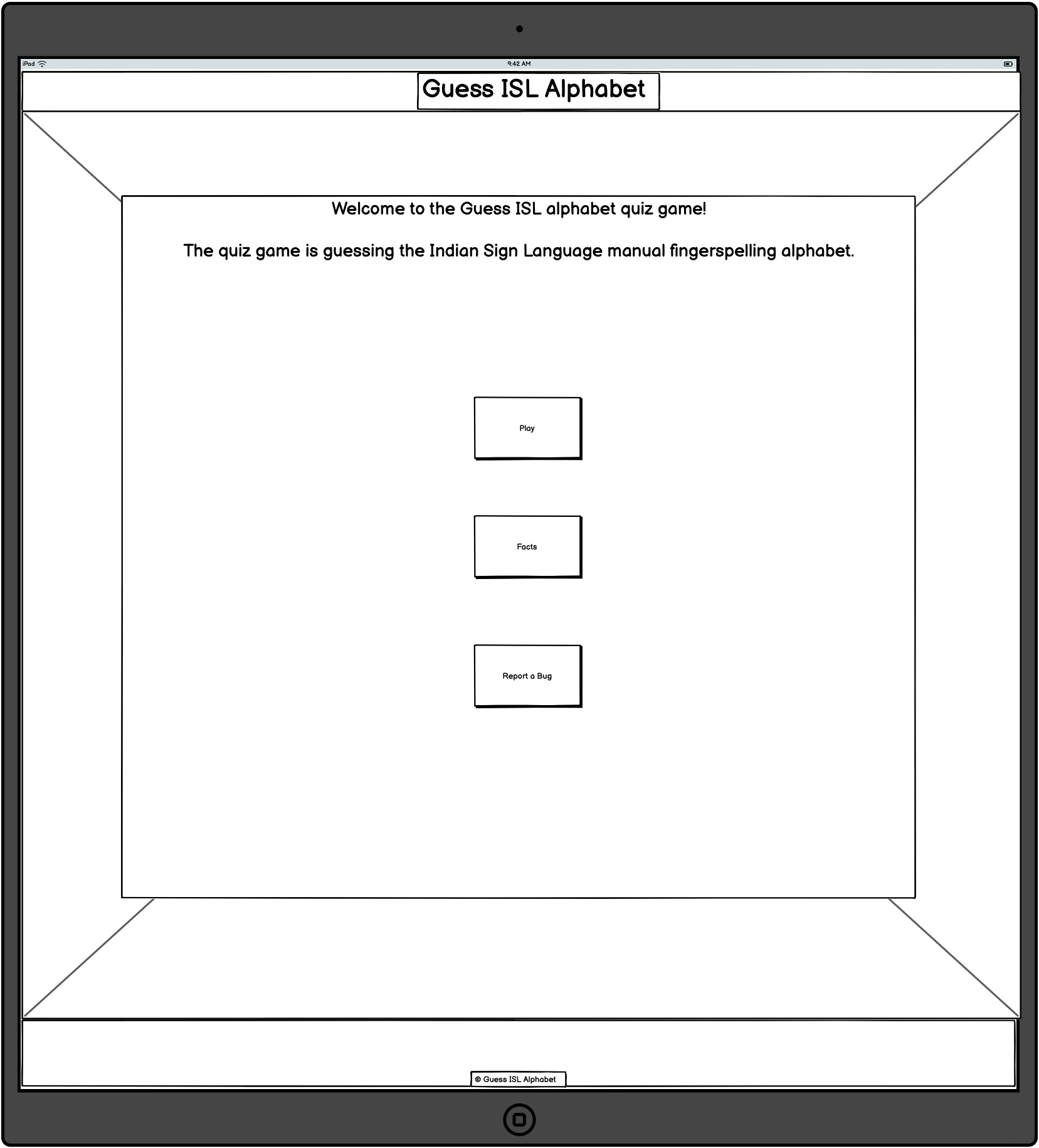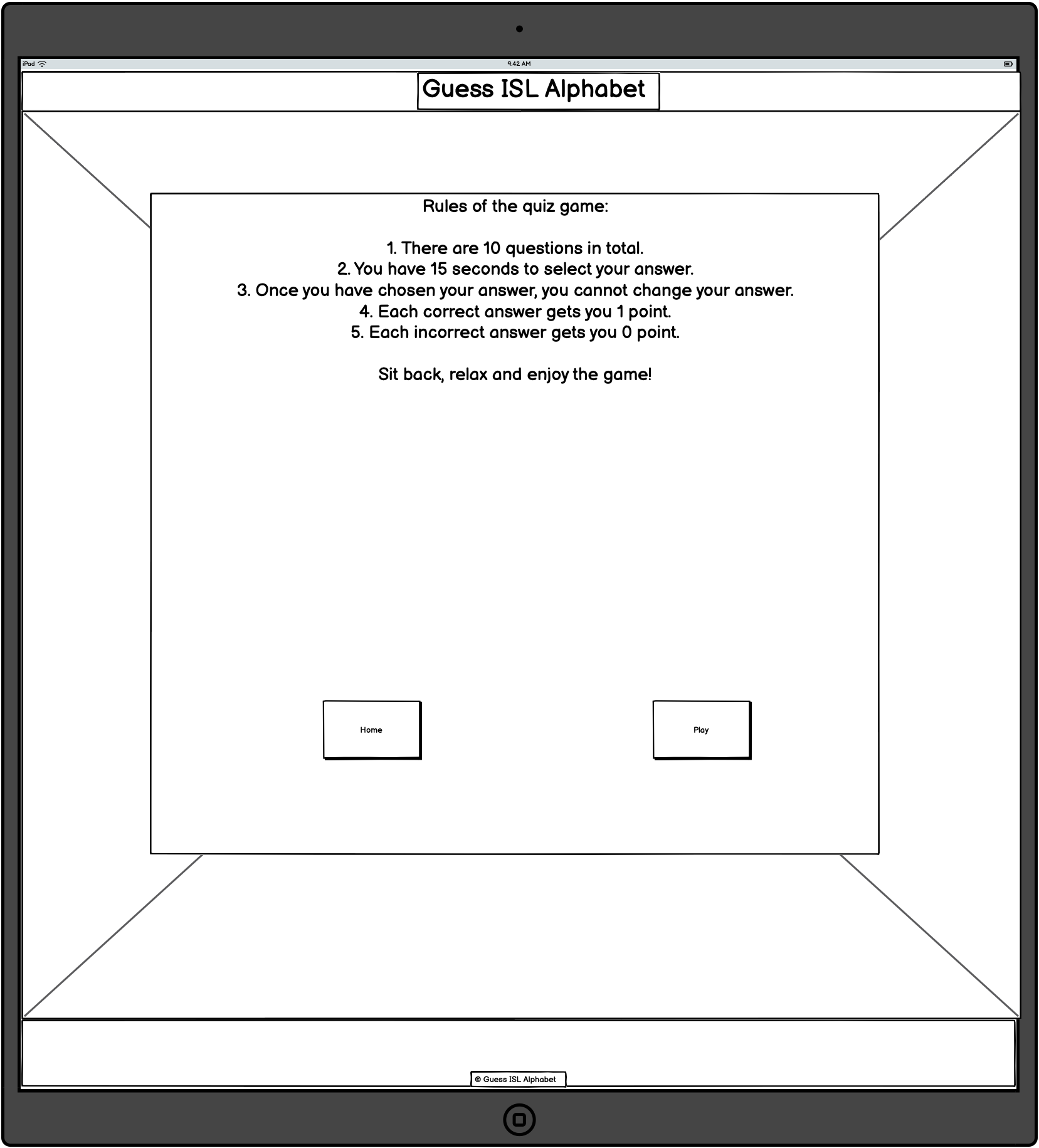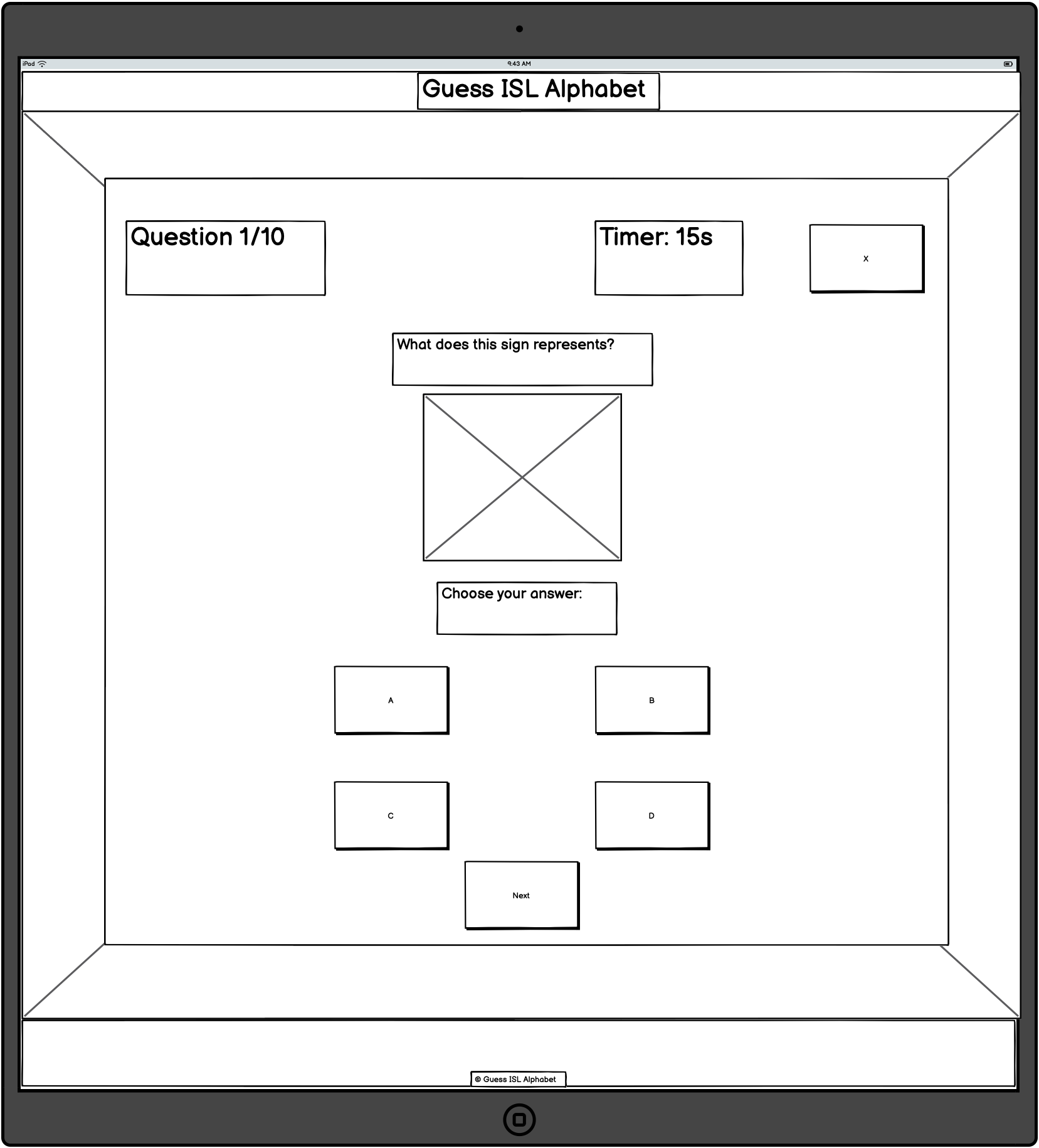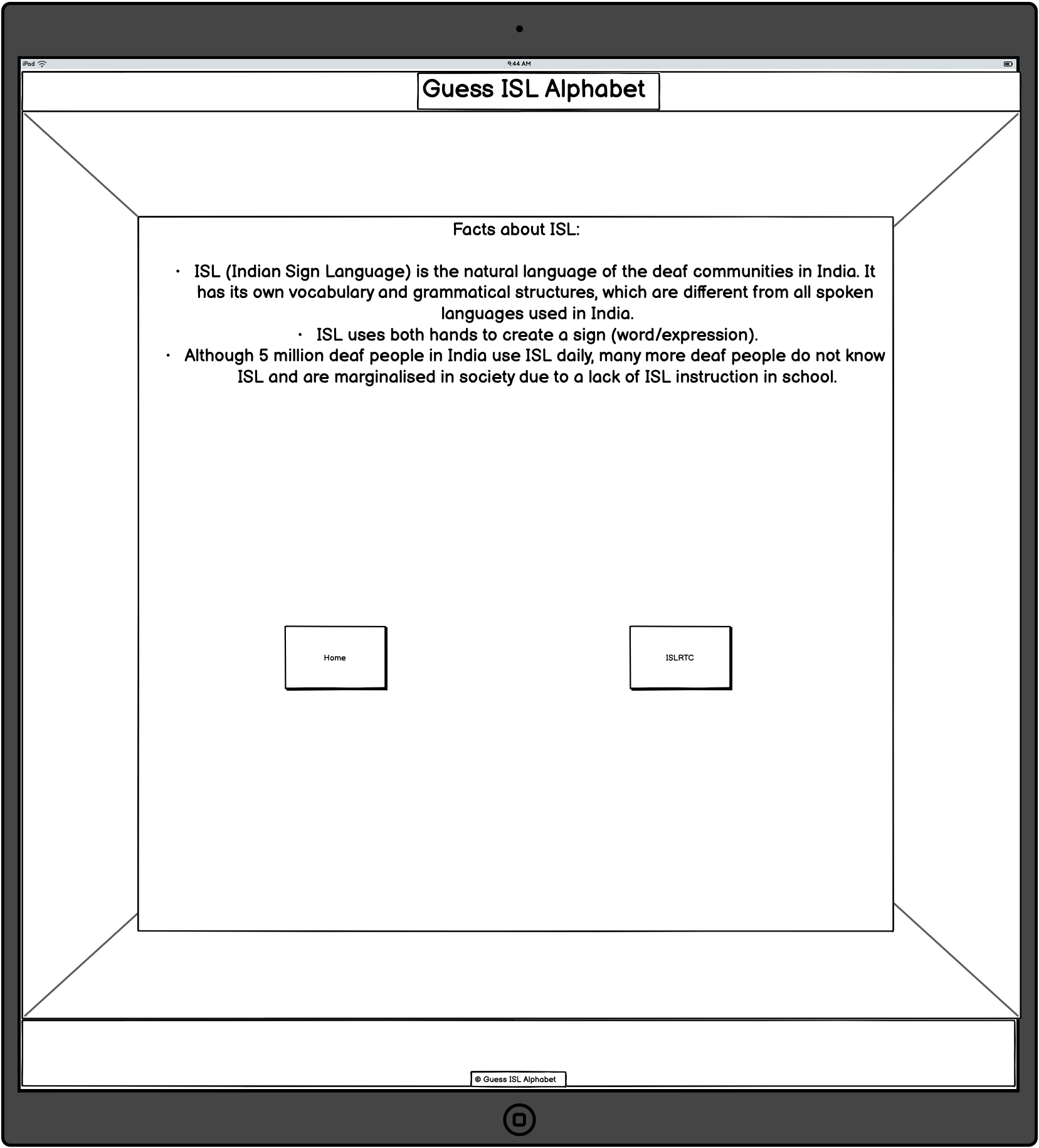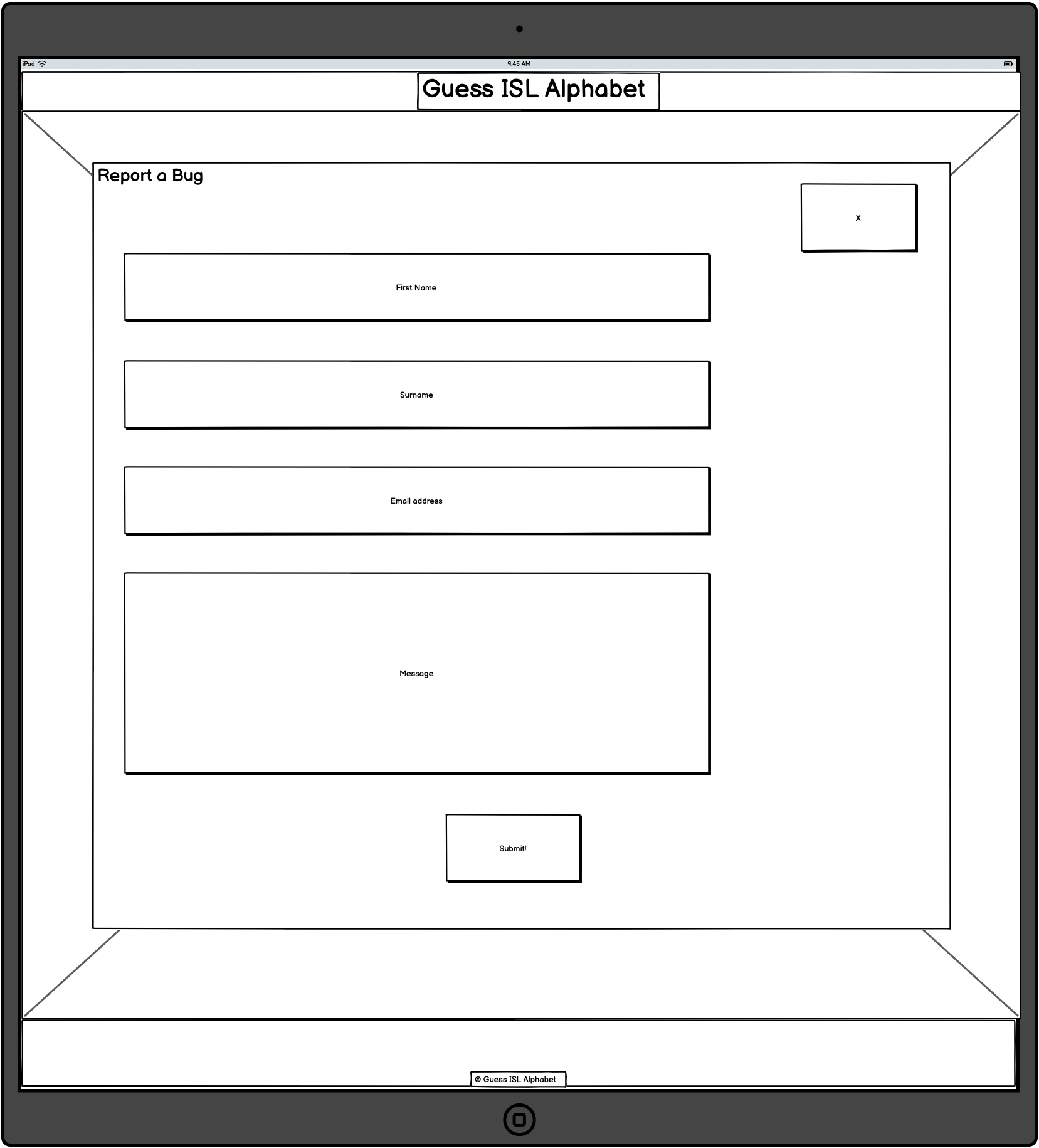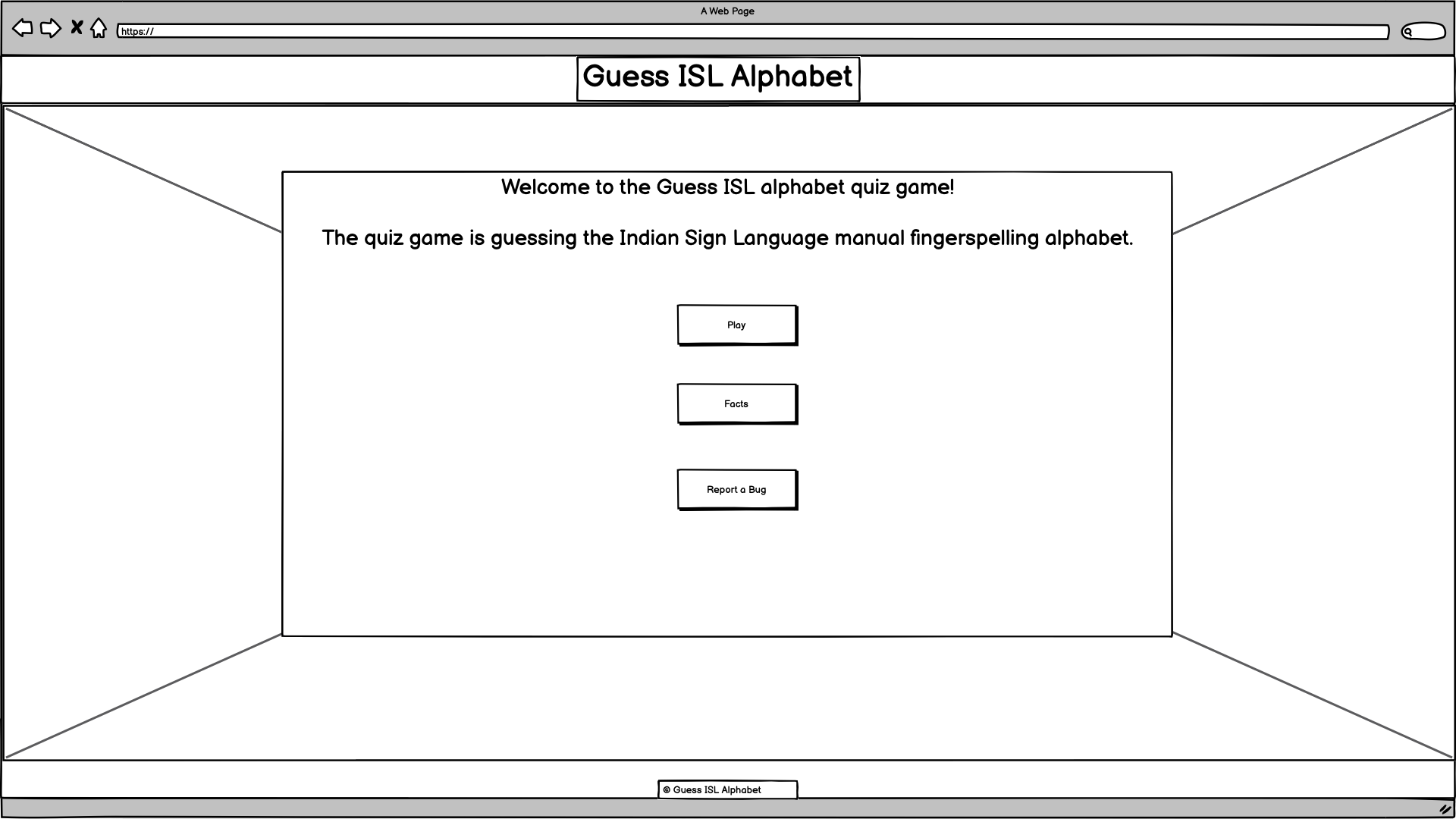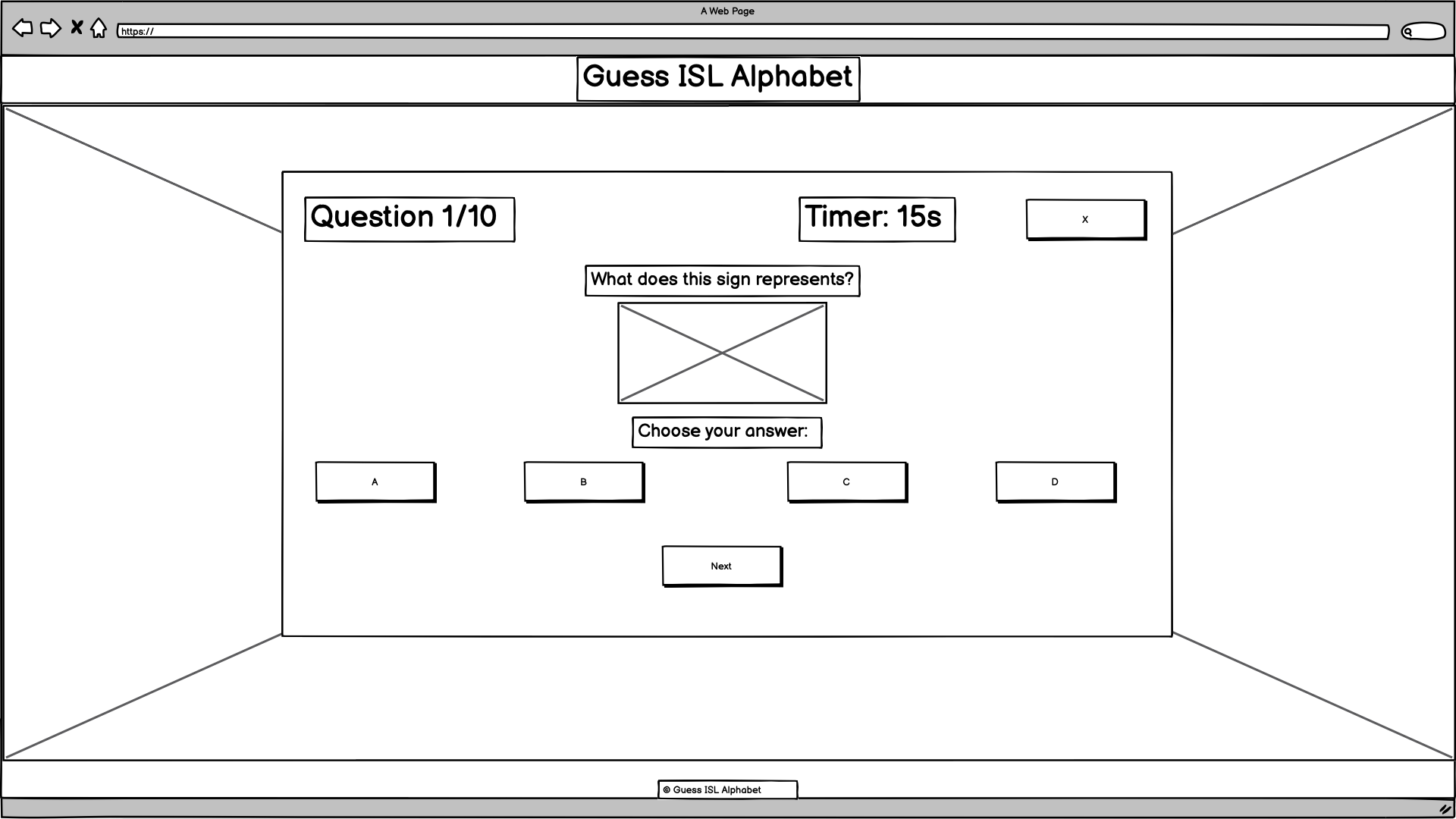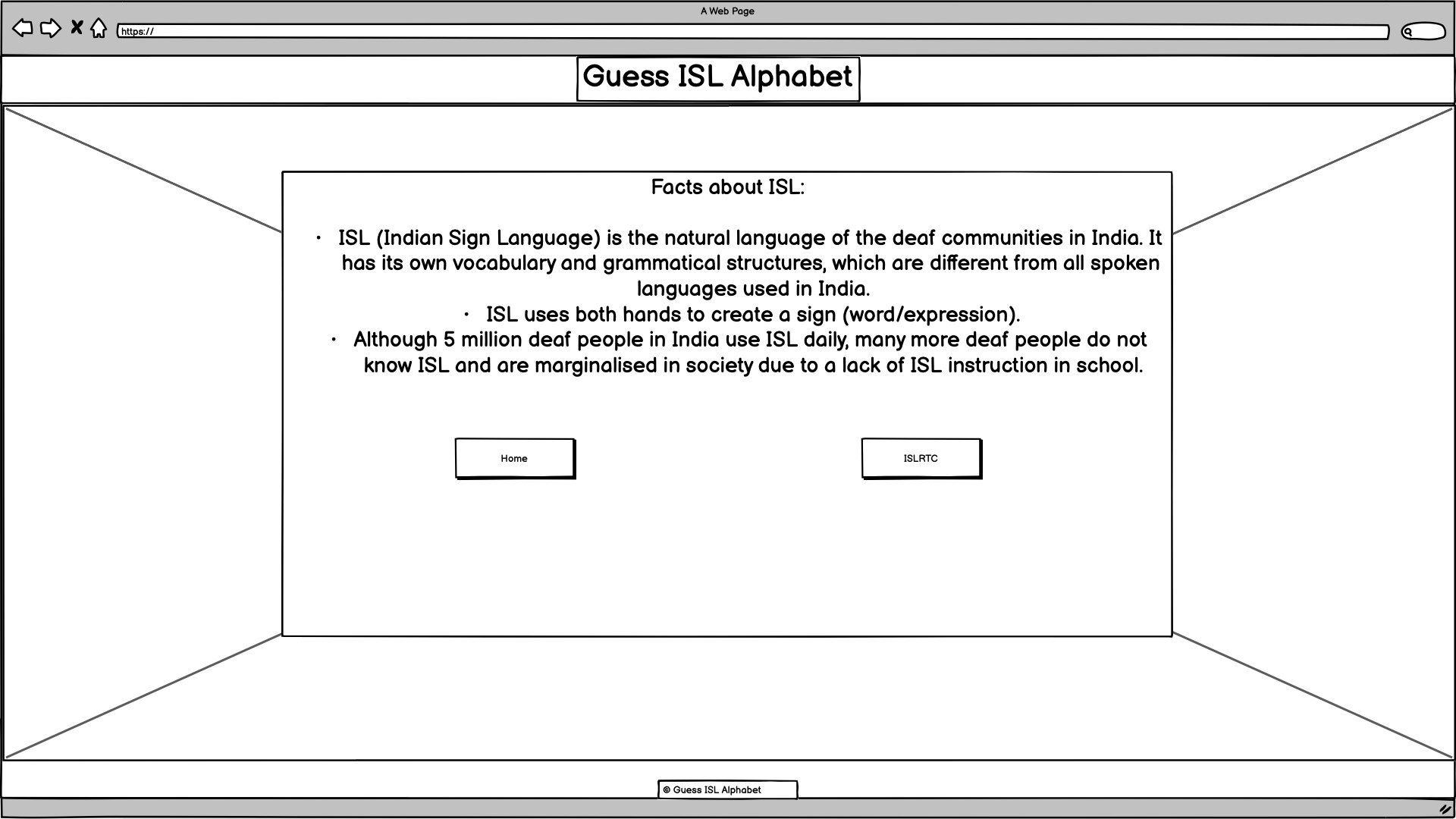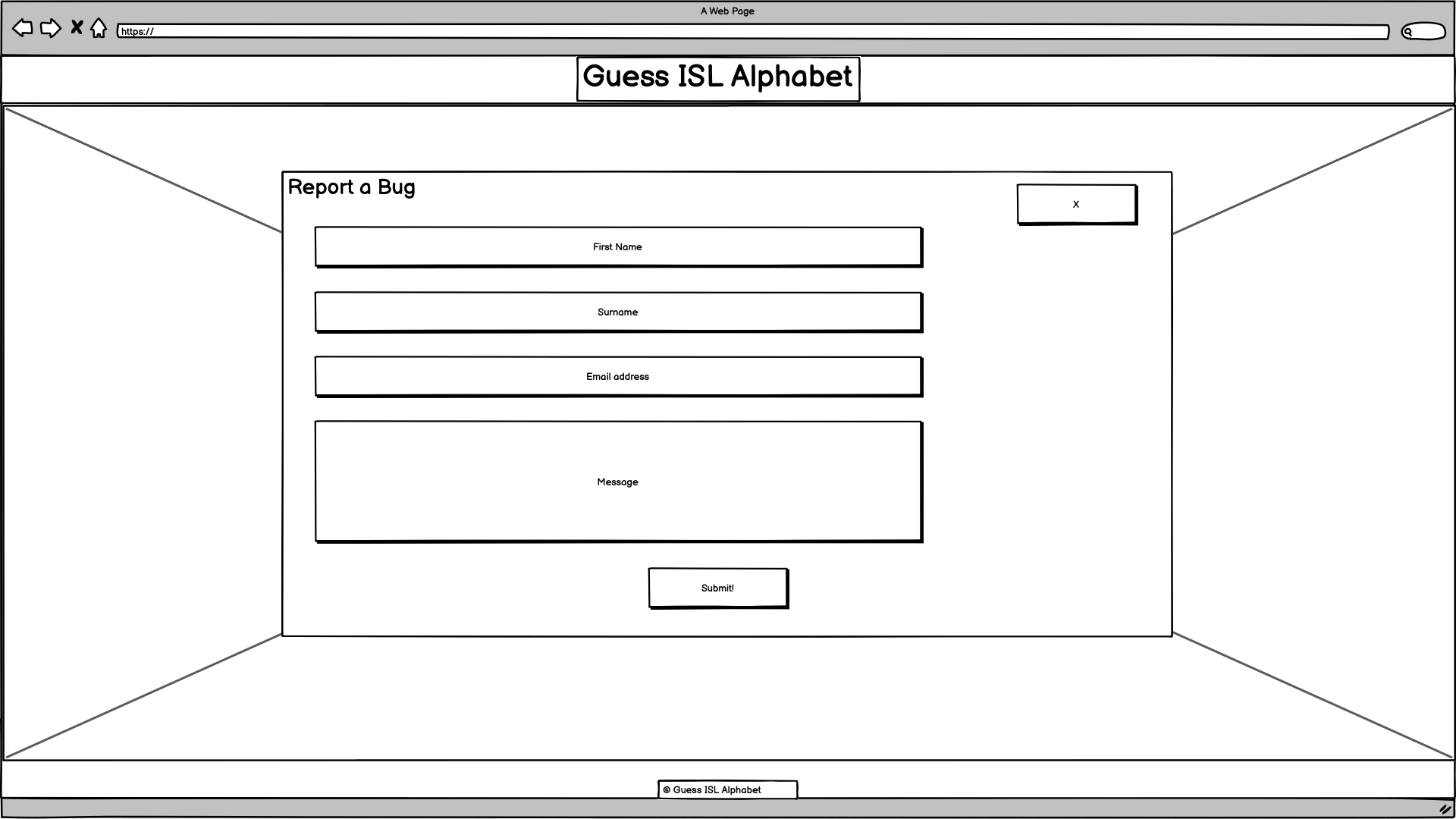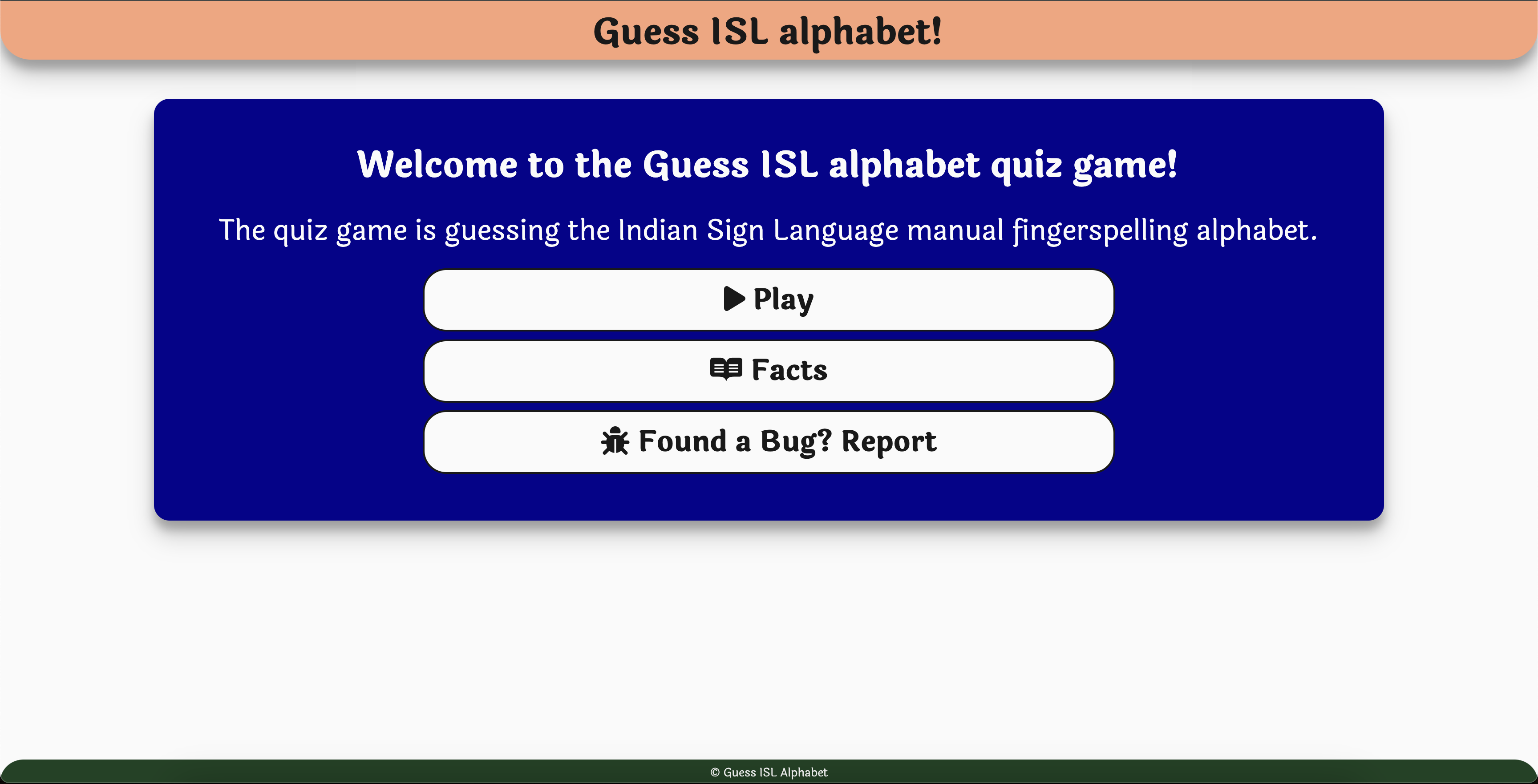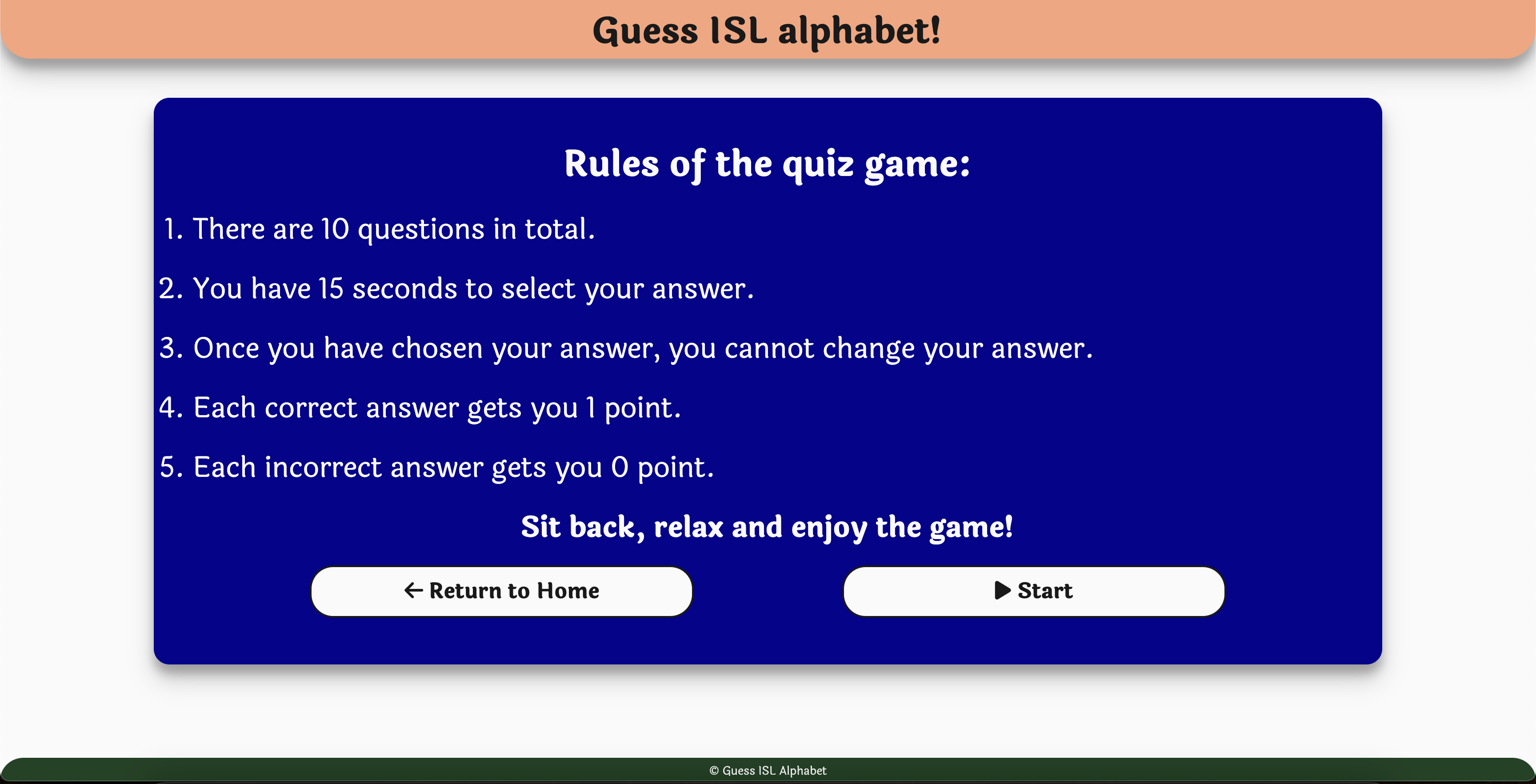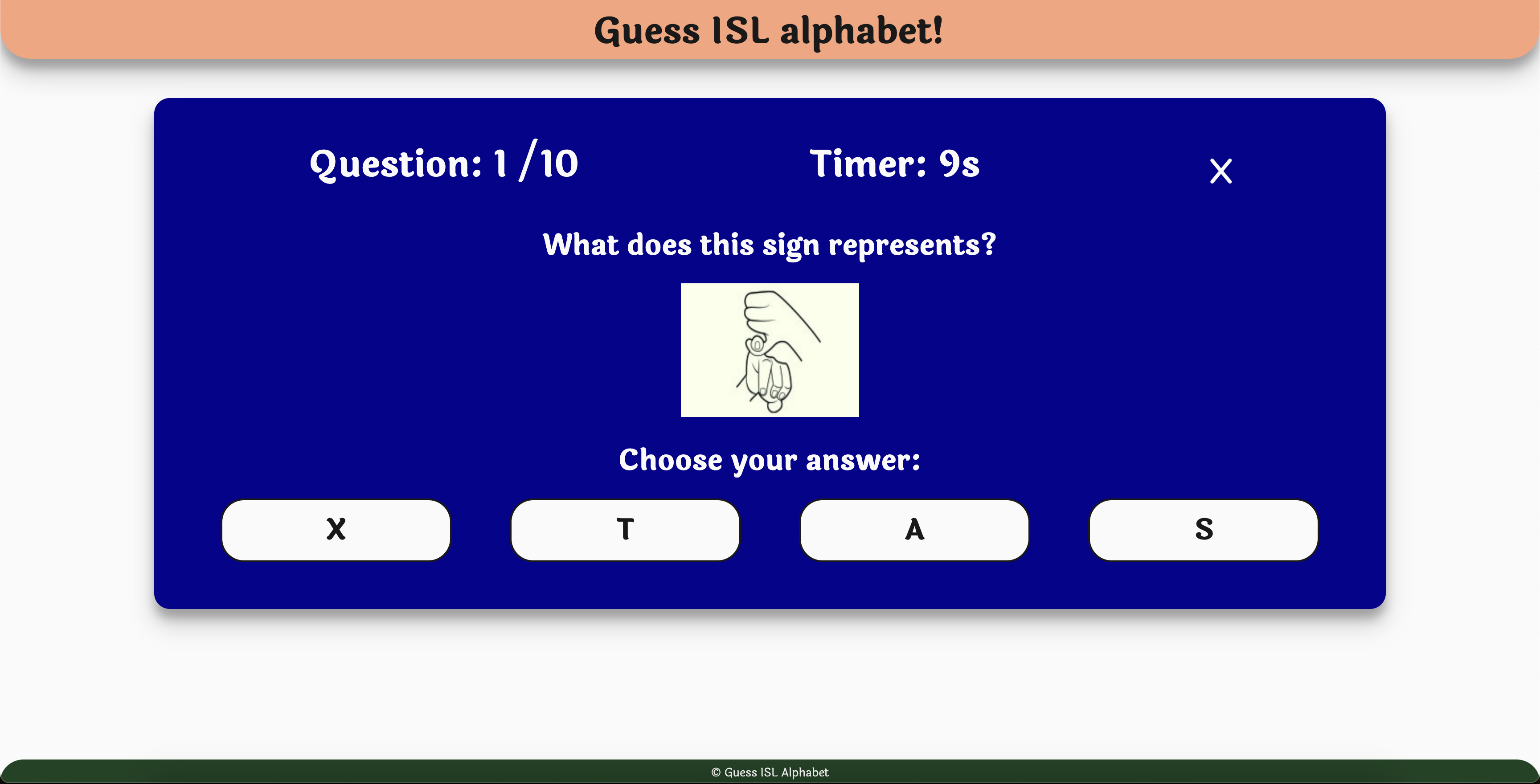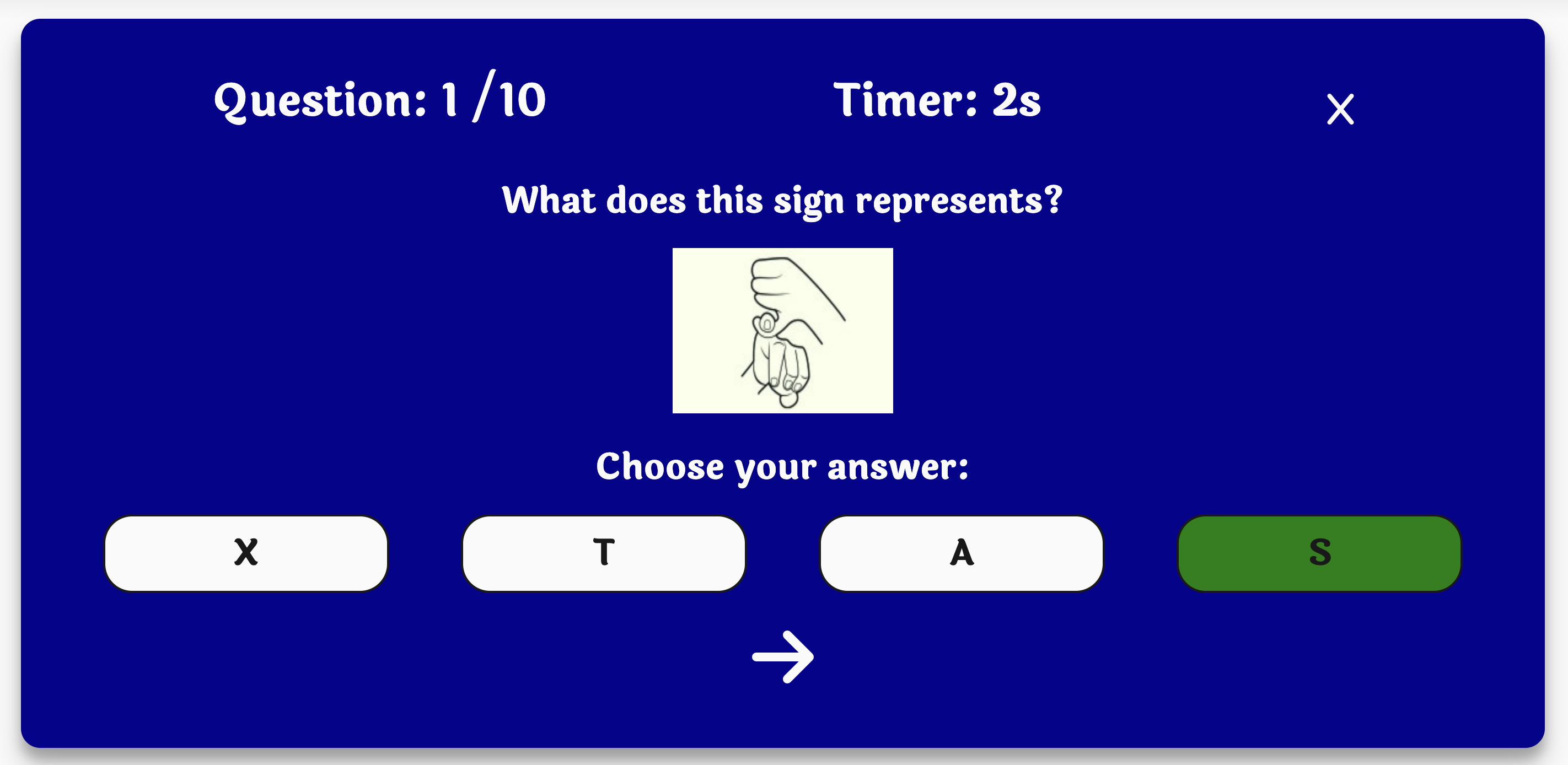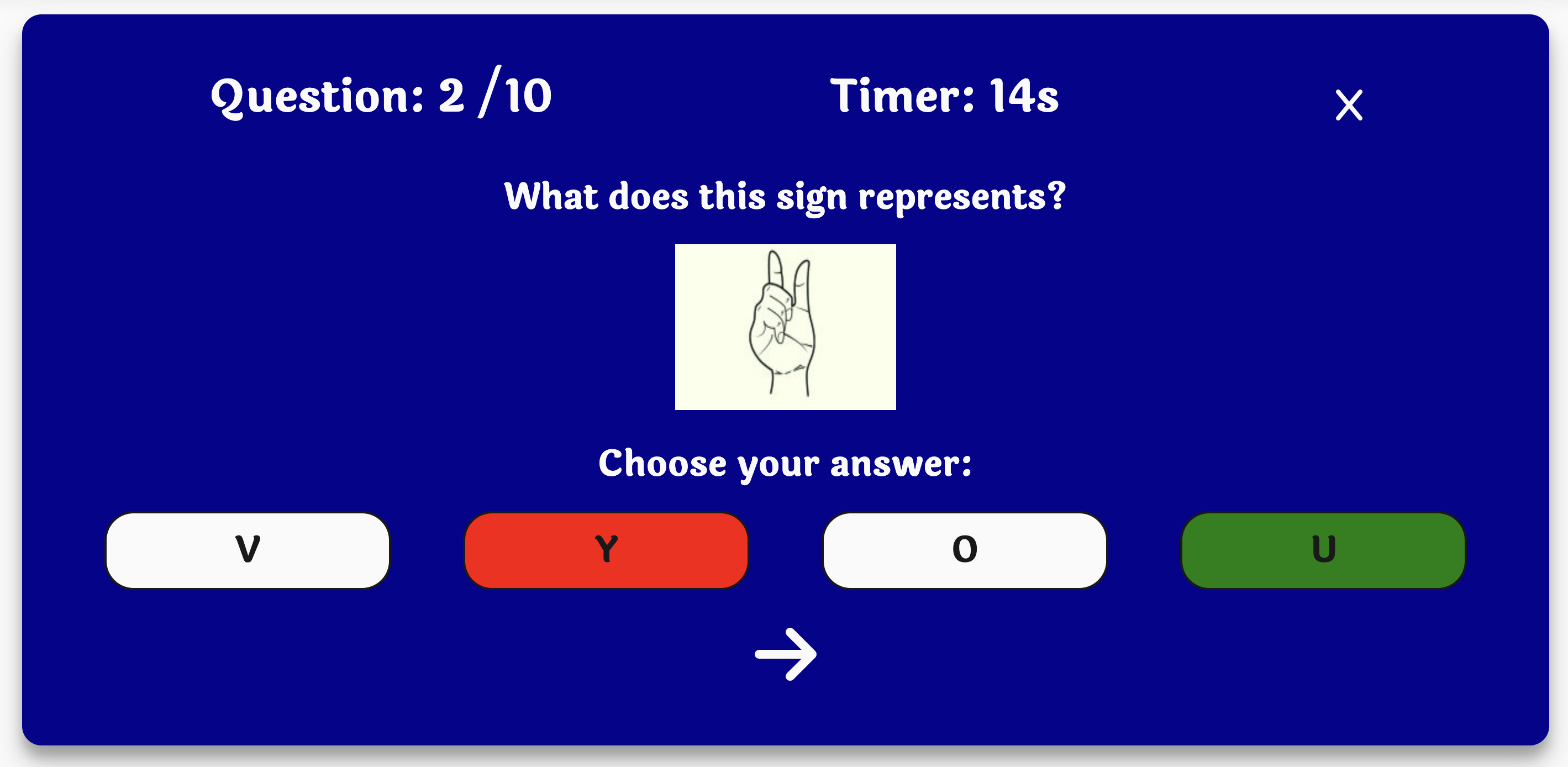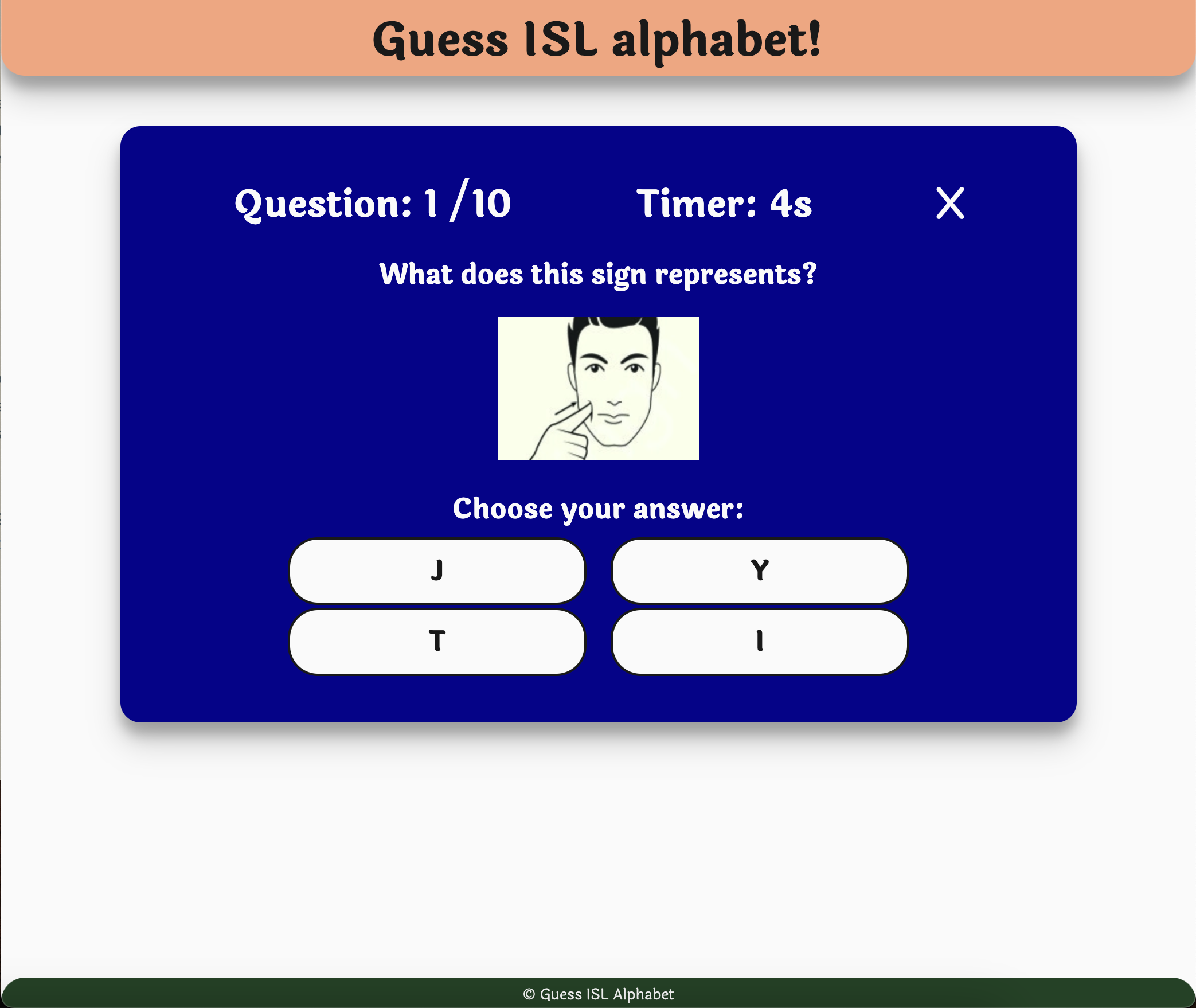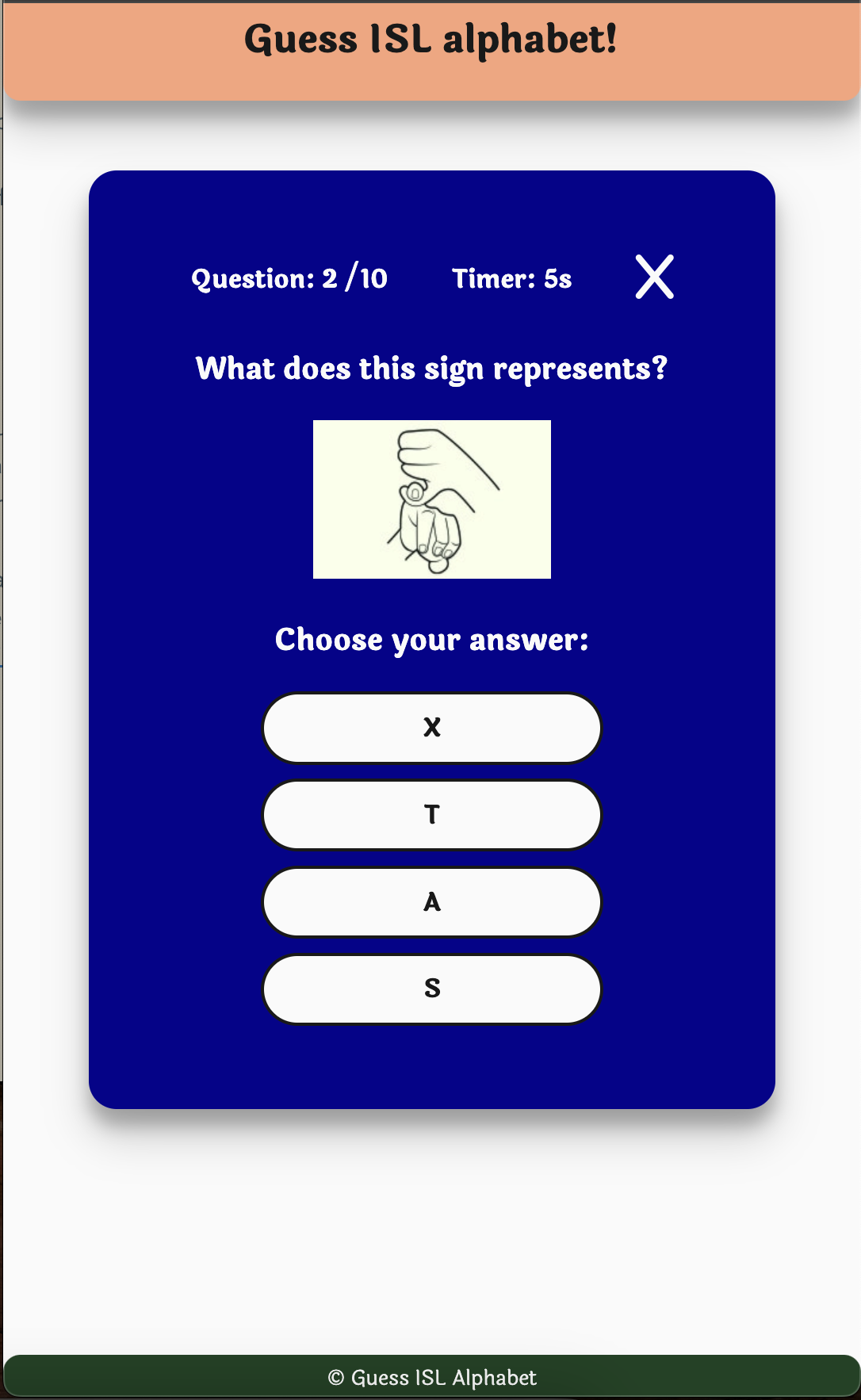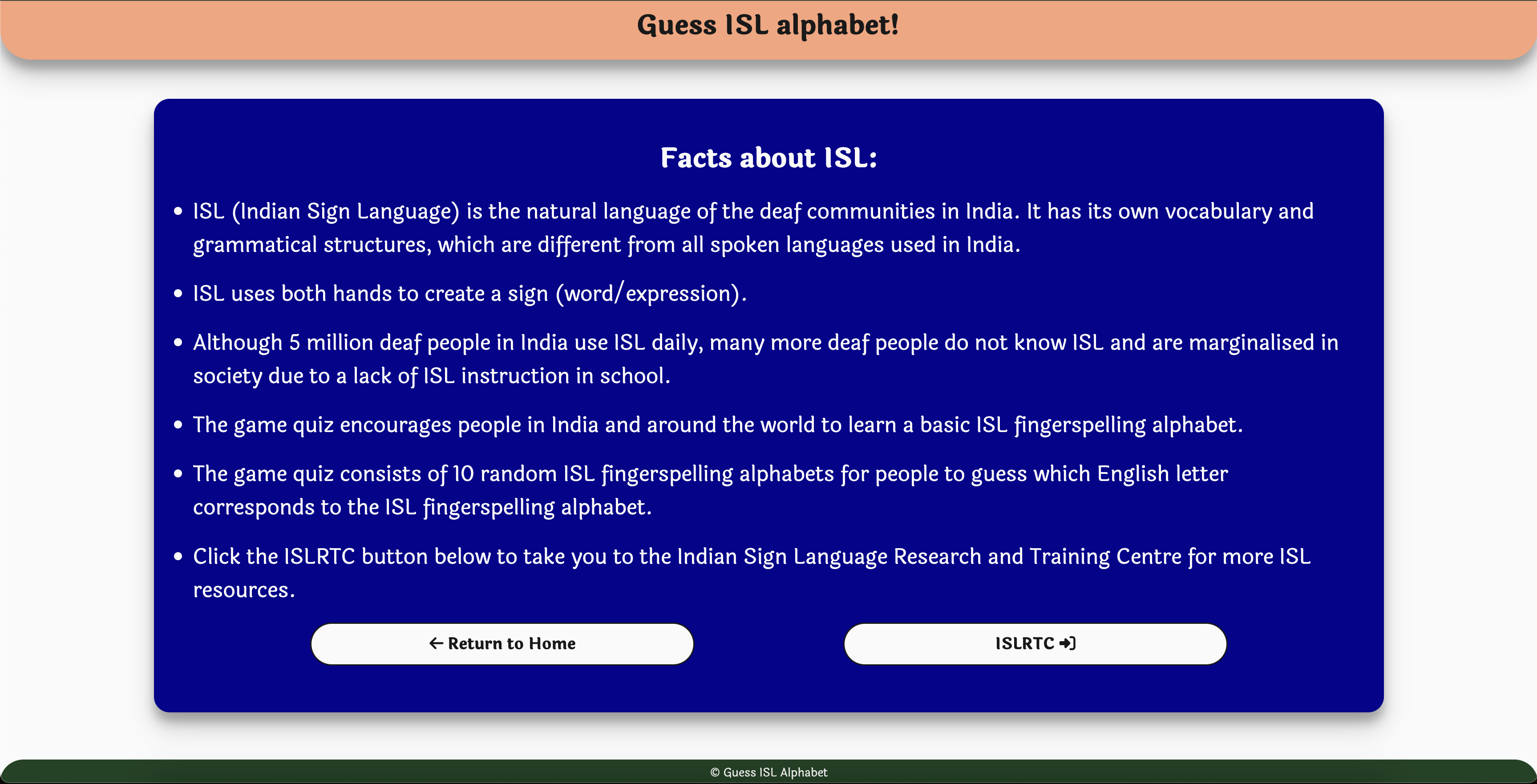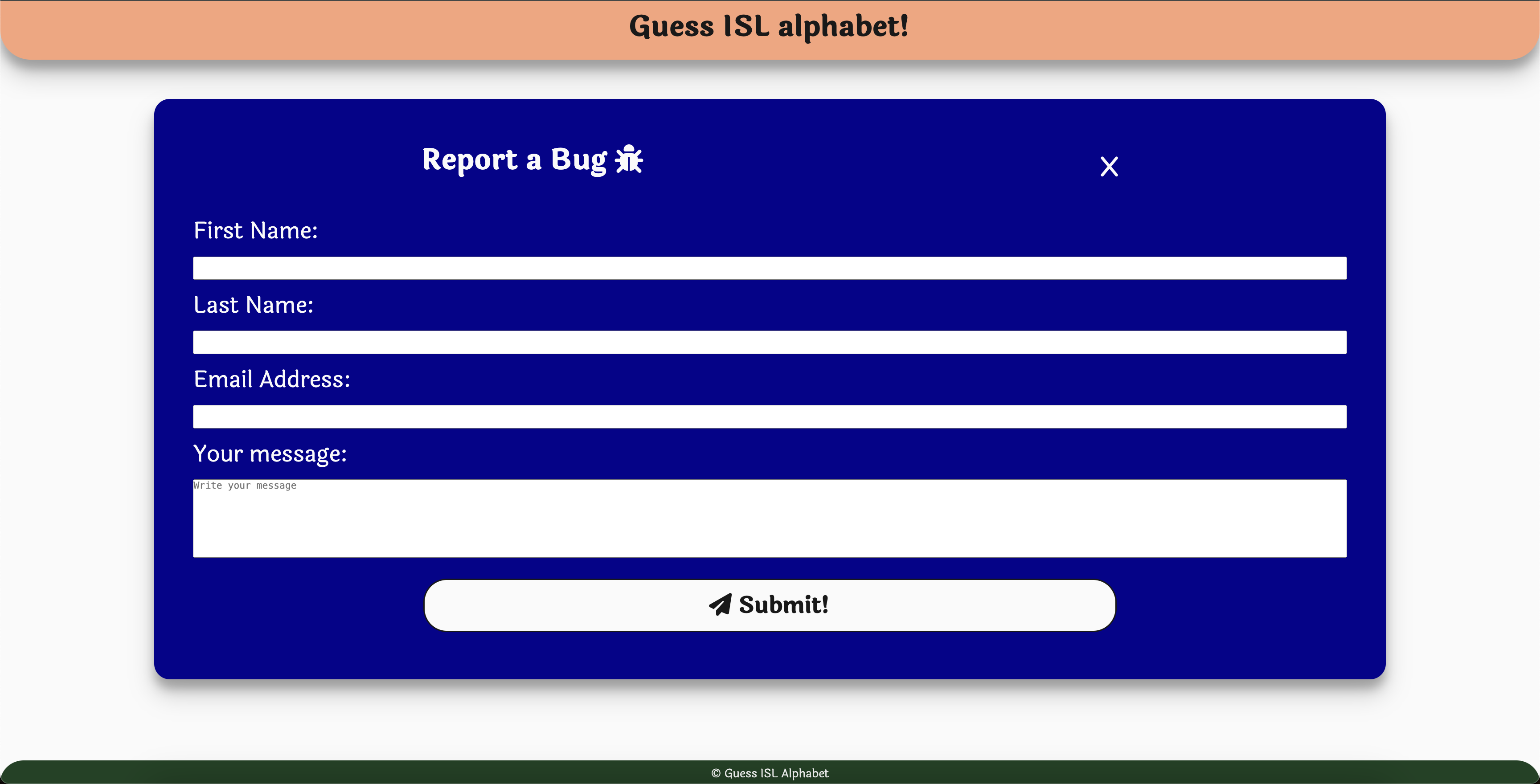Participate in our interactive quiz game to improve your skills with the ISL fingerspelling alphabet. Through interactive and challenging quizzes, you can improve your understanding and fluency in ISL fingerspelling, promoting inclusivity and accessibility in communication.
This project aims to develop an interactive online quiz game for learning and practising the Indian Sign Language (ISL) fingerspelling alphabet. It aims to ensure ISL learning is accessible and enjoyable while also promoting inclusivity and community communication. Through gamification, the project seeks to enhance users' retention and understanding of ISL fingerspelling, ultimately contributing to their language proficiency. Also, this is part of the second portfolio project of the Code Institute course.
Our main target audience consists of people who want to learn ISL, including students, educators, interpreters, and friends or family members who use ISL. If you are interested in language learning and inclusivity or just want a fun and educational challenge, the game is for you.
Discover a fun and interactive way to master the ISL fingerspelling alphabet through our unique quiz game. We enhance engagement and effectiveness by gamifying the learning process. Regardless of your skill level, our game is a valuable tool for improving your ISL fingerspelling abilities.
Click here to view the Live website
- Introduction
- UX
- User Stories
- Wireframes
- Features
- Tools & Technologies Used
- Testing
- Deployment
- Credits
In this project, I follow the Five Planes of User Experience model invented by Jesse James Garrett.
This model aids in transforming from abstract ideas, such as creating objectives of the project and identifying the user needs, to concrete concepts, such as assembling visual elements together to produce the visual design of the idea to meet the project's objectives and users' needs.
Indian Sign Language (ISL) has recently been brought to the attention of people in India. The Prime Minister of India, Narendra Modi, made it part of the school curriculum. Also, Narendra Modi launched the first official ISL dictionary, which consists of 4,000 signs. They have launched the third edition of ISL, bringing the total number of signs to 10,000 so far.
Users may look for ISL gamification. Therefore, the main objective of this project is to create a gamification website that encourages users to learn and practice ISL fingerspelling alphabet as a first step in learning ISL. Also, a gamification website includes an external resource for users to learn ISL further. Thus, this project aims to meet the business and the user's needs.
Based on the main objective and goals set out in the Strategy Plane, these requirements for developing the website are broken down into two categories:
- Gamification ISL fingerspelling alphabet
- Facts about ISL
- External resources to learn ISL further
- Easy and interactive gamification
- Easy to navigate the gamification website
- Provide an external link to get more resources for learning ISL
The requirements outlined in the Scope Plane were then used to create a structure for the website. A site map below shows how users can navigate the website easily.
Please refer to the Wireframes section for more detailed wireframing.
Click here to view the live site.
I used Color Hunt to generate my colour palette
The colour palette represents the flag of India. However, it was crucial for the colour palette to pass the minimum colour contrast set by the Web Content Accessibility Guide (WCAG). The colour palette was tested using Coolors' Color Contrast Checker. The result below shows that these colours passed the minimum WCAG contrast ratio.
I have used CSS `:root` variables to easily update the global colour scheme by changing only one value, instead of everywhere in the CSS file.
:root {
--saffron: #F9A37B;
--white: #FAFAFA;
--green: #1A4223;
--navy: #06038D;
--black: #191919;
}Laila was chosen as the main font for the whole website. The font was imported from Google Fonts. The font makes the website look and feel cartoony and fun.
Arial and sans-serif were used as step-back fonts if Hind Vadodara failed to load on the website.
-
As a new user, I want to understand how to play the game, so that I can start learning ISL fingerspelling.
-
As a new user, I want to be able to see the immediate result after selecting the answer.
-
As a new user, I want to be able to replay the game, so that I can practice and improve my skills.
-
As a returning user, I want to find resources to learn ISL further.
-
As a returning user, I want to see new and varied questions each time, so that my learning continues to be challenged.
-
As a returning user, I want to be able to share my scores, so that I can challenge my friends to beat my score.
To follow best practice, wireframes were developed for mobile, tablet, and desktop sizes.
I have used Balsamiq to design my site wireframes.
The Home Page is the first contact users will encounter when visiting this website. The page appears with the title welcoming users to the website. Also, there are three buttons that leads users to the Rules page, the Facts page, and the Contact page. Click here to view the home page
At the top of the website is the header appears the name of the website.
The footer is at the bottom of the website appears the copyright message.
The Rules page explains the rules of the game. There are two buttons that leads users back to the Home page or continue to the Game page to start the game. Click here to view the Rules page
The Game page is where the user can play the game. The top of the box container consists of the current question number, the countdown timer of 15 seconds, and the X button to quit the game. In addition, the image appears in the centre of the box container, which shows ISL fingerspelling alphabet for users to guess. At the bottom of the box container consists of four answer buttons for users to choose one of four buttons. Once user choose their answer, it will appear a green colour to indicate that this is a correct answer. Otherwise, it would appear a red colour to indicate that this is a wrong answer, and a green colour to show which answer was correct. Then, the next button will appear to allow users to move to the next question. Upon the completion of the game, the result container will appear and give users choice to restart the game or quit to the home page. The game quiz was also made for responsive across different screen sizes. Click here to view the Game page
- Tablet version
- Mobile version
The Facts page features a short list of facts about ISL. There are two buttons that take users back to the home page or take users to the external link (Indian Sign Language Research and Training Centre) for more ISL learning resources. Click here to view the Facts page
The Contact page features a contact form for users to input their first name, surname, email address, and message. This page enables users to contact the website's owner directly. Also, there is a button that users need to click to send their form to the website's owner. Once a user submits the contact form, the confirmation container to confirm that their contact form was submitted successfully. The users will be redirected to the home page automatically after 10 seconds. Click here to view the Contact page
- Offers three different levels of difficult - easy (10 questions), medium (18 questions), and hard (26 questions).
- The dark mode toggle shall be implemented on the website to give users an option to enable a dark mode on this website.
- Add fingerspelling numbers to the game quiz.
- Add basic signs to the game quiz.
- Create visual appealing modals to reduce number of pages needed to go through.
- HTML used for the main site content.
- CSS used for the main site design and layout.
- JavaScript used for user interaction on the site.
- CSS :root variables used for reusable styles throughout the site.
- CSS Flexbox used for an enhanced responsive layout.
- Git used for version control. (
git add,git commit,git push) - GitHub used for secure online code storage.
- GitHub Pages used for hosting the deployed front-end site.
- GitHub Copilot used for debugging codes.
- Gitpod used as a cloud-based IDE for development.
- CodePen used for toying and testing with CSS design before committing changes to the actual website design.
For all testing, please refer to the TESTING.md file.
The site was deployed to GitHub Pages. The steps to deploy are as follows:
- In the GitHub repository, navigate to the Settings tab
- From the source section drop-down menu, select the Main Branch, then click "Save".
- The page will be automatically refreshed with a detailed ribbon display to indicate the successful deployment.
The live link can be found here
This project can be cloned or forked in order to make a local copy on your own system.
You can clone the repository by following these steps:
- Go to the GitHub repository
- Locate the Code button above the list of files and click it
- Select if you prefer to clone using HTTPS, SSH, or GitHub CLI and click the copy button to copy the URL to your clipboard
- Open Git Bash or Terminal
- Change the current working directory to the one where you want the cloned directory
- In your IDE Terminal, type the following command to clone my repository:
git clone https://github.com/RoBizMan/guess-indian-sign-lang-alphabet.git
- Press Enter to create your local clone.
Alternatively, if using Gitpod, you can click below to create your own workspace using this repository.
By forking the GitHub Repository, we make a copy of the original repository on our GitHub account to view and/or make changes without affecting the original owner's repository. You can fork this repository by using the following steps:
- Log in to GitHub and locate the GitHub Repository
- At the top of the Repository (not top of page) just above the "Settings" Button on the menu, locate the "Fork" Button.
- Once clicked, you should now have a copy of the original repository in your own GitHub account!
There was no difference between local and deployment noticed.
| Source | Location | Notes |
|---|---|---|
| Markdown Builder | README and TESTING | tool to help generate the Markdown files |
| freeCodeCamp | version control | "How to Write Better Git Commit Messages - A Step-By-Step Guide" |
| W3Schools | entire site | box shadow property |
| CSS-Tricks | game | make answer buttons grid in tablet mode |
| GeekforGeeks | entire site | current javascript version for jshint es version |
| W3Schools | entire site | hjavascript version |
| DEV | game | build a simple game quiz with shuffled questions |
| freeCodeCamp | game | shuffle array of questions |
| W3Schools | game | countdown timer |
| JavaScript | entire page | manipulate DOM |
| Google Fonts - Hind Vadodara | entire site | Hind Vadodara font used throughout the website |
| Fontawesome | entire site | icons used throughout the website |
| Logo | entire site | the company's logo was generated by Logo and used throughout the website, including favicon |
| Source | Location | Type | Notes |
|---|---|---|---|
| ISLRTC | game | image | ISL fingerspelling alphabet |
| NIOS | facts | articles | Figure of deaf people in India use ISL |
- I would like to thank my Code Institute mentor, Tim Nelson for their support and feedback throughout the development of this project.
- I would like to thank the Code Institute tutor team for their visual guidance and clarifications throughout all concepts I might not have initially understood.
- I would like to thank the Code Institute Slack community for the moral support; it kept me going during periods of self doubt and imposter syndrome and kept me sane.
- I would like to thank my partner, for believing in me, and encouraging me to make this transition into software development.
- I would like to thank my parents and grandparents for trusting that I could make a smooth transition into a new career pathway.
- I would like to thank my friends for visiting my website and feeding me with their feedback so that I can continue improving/enhancing UX design on my website.



